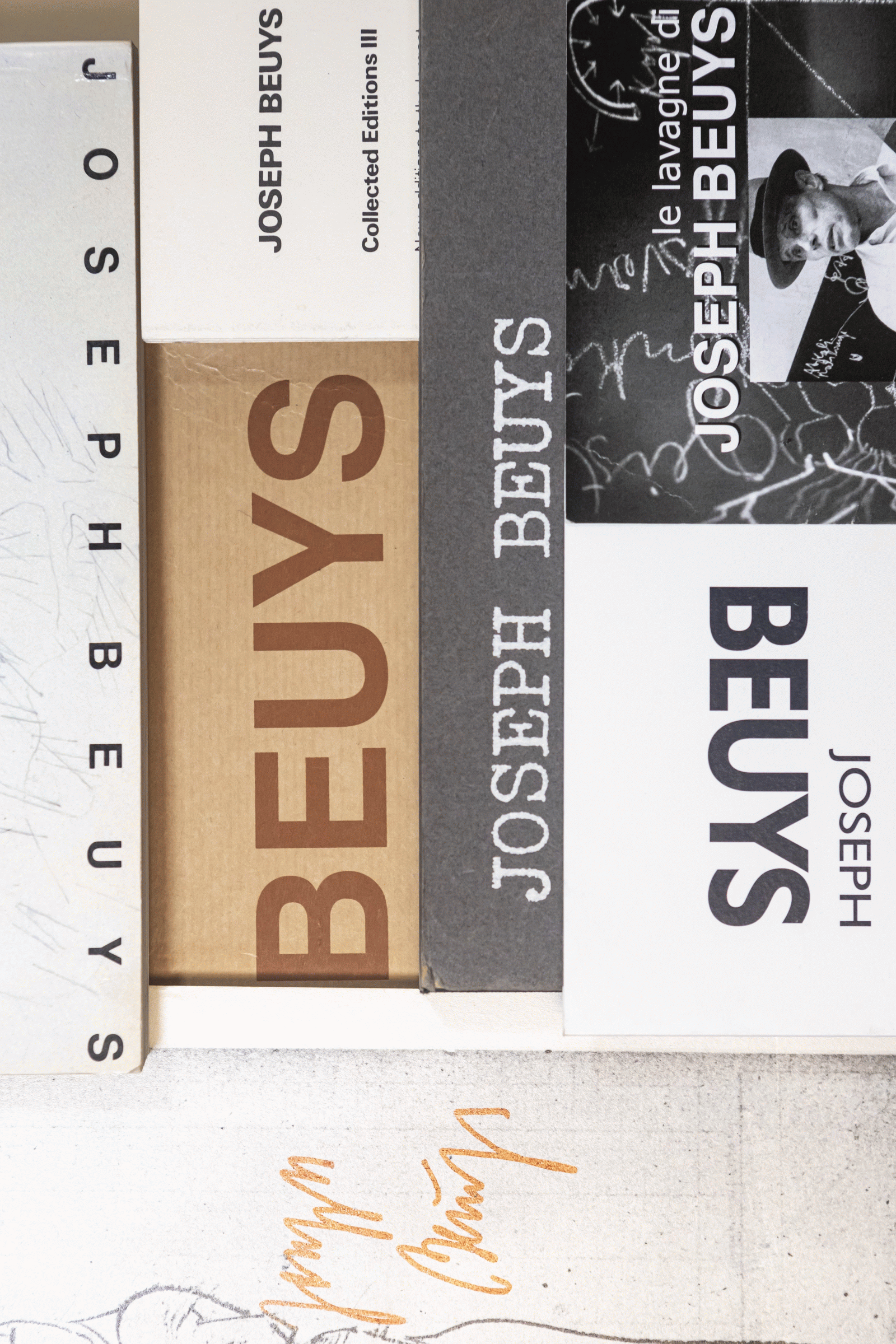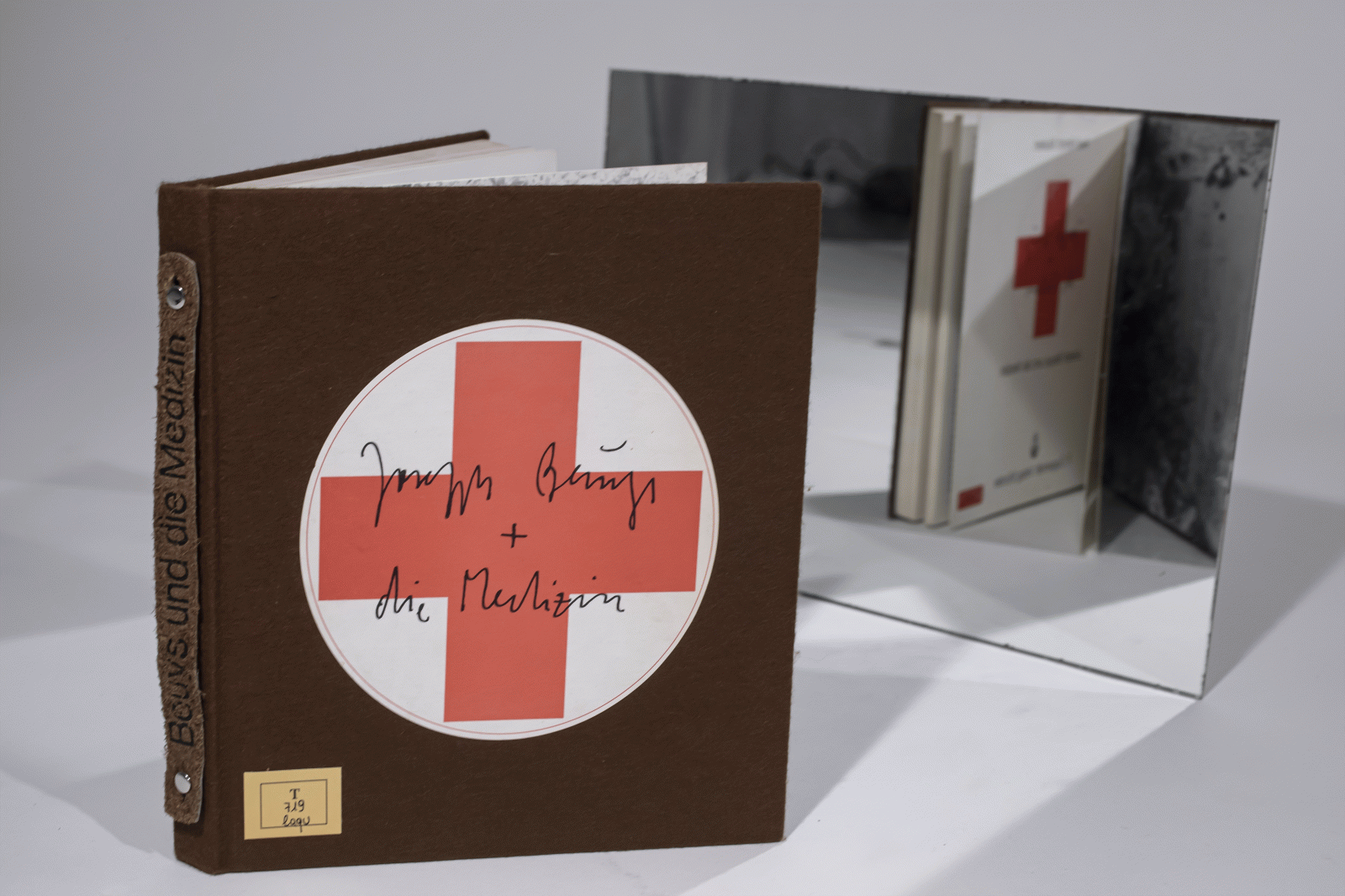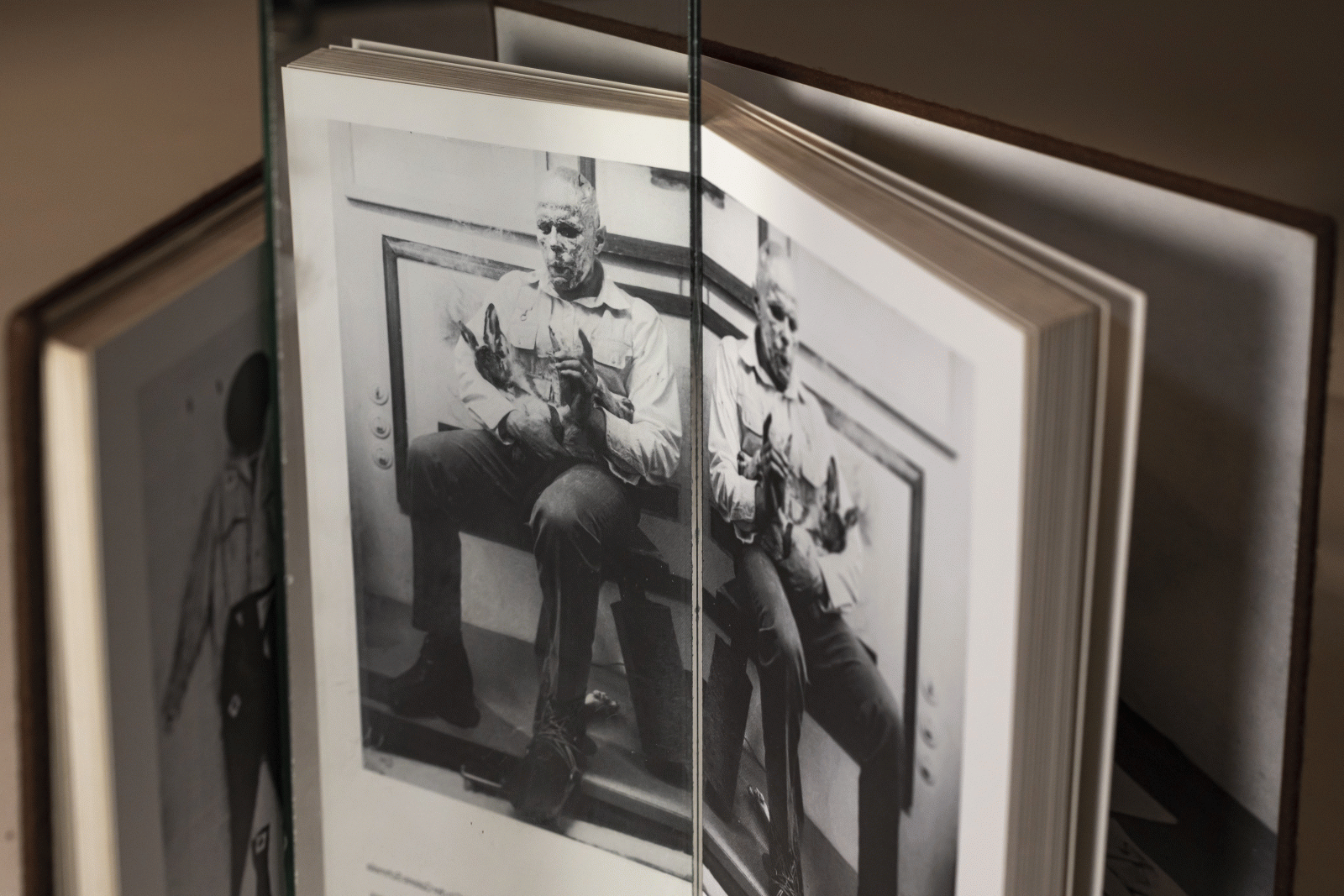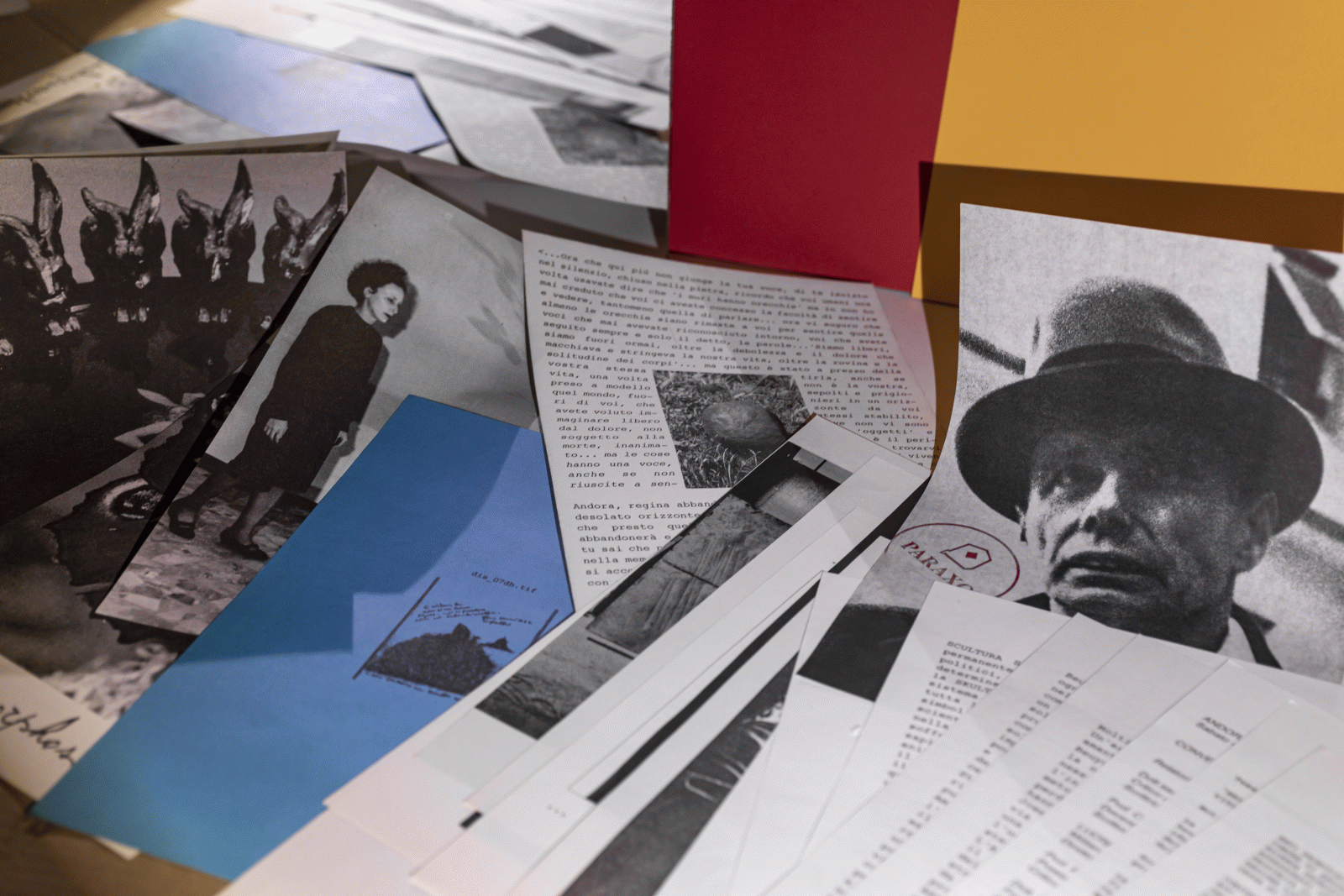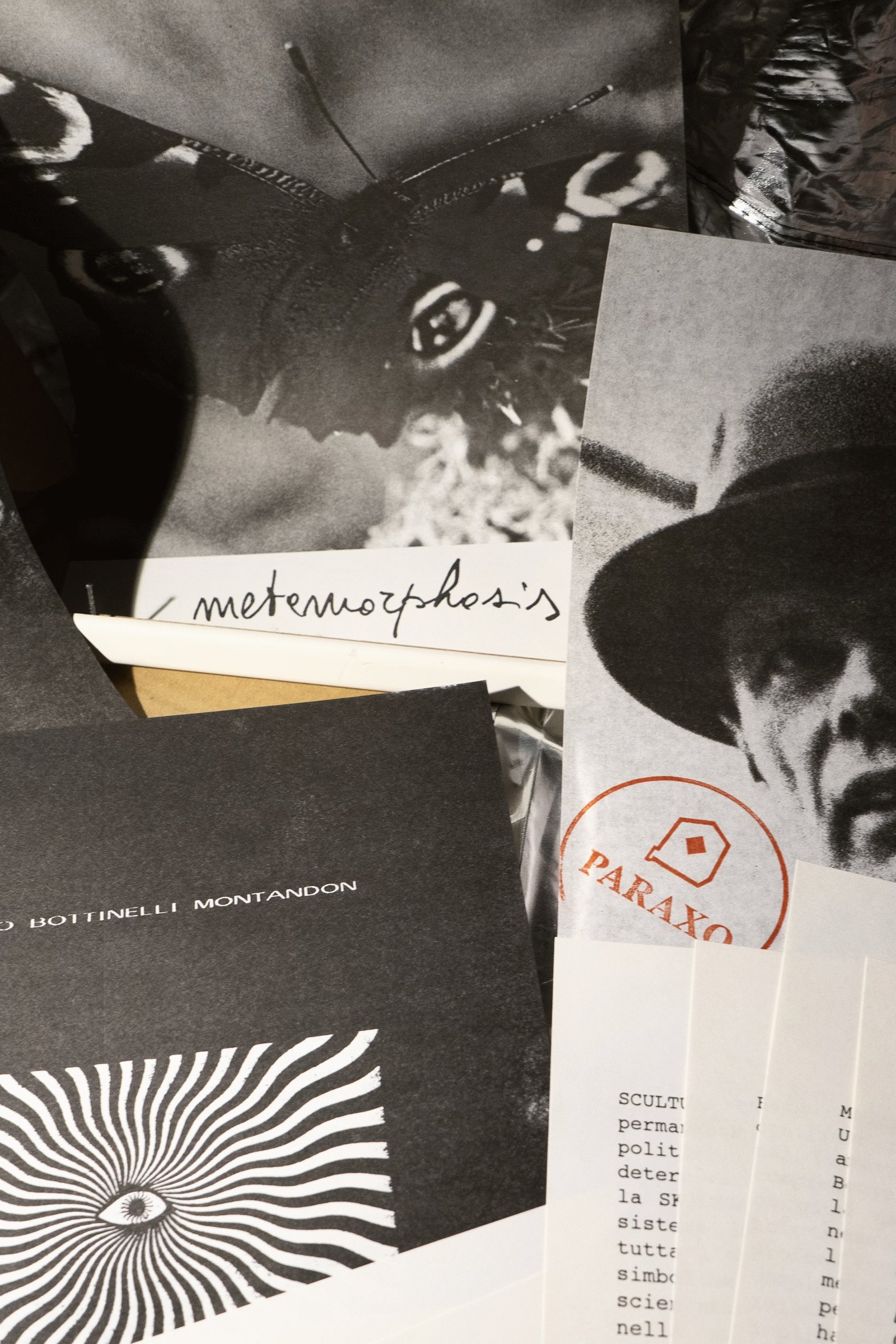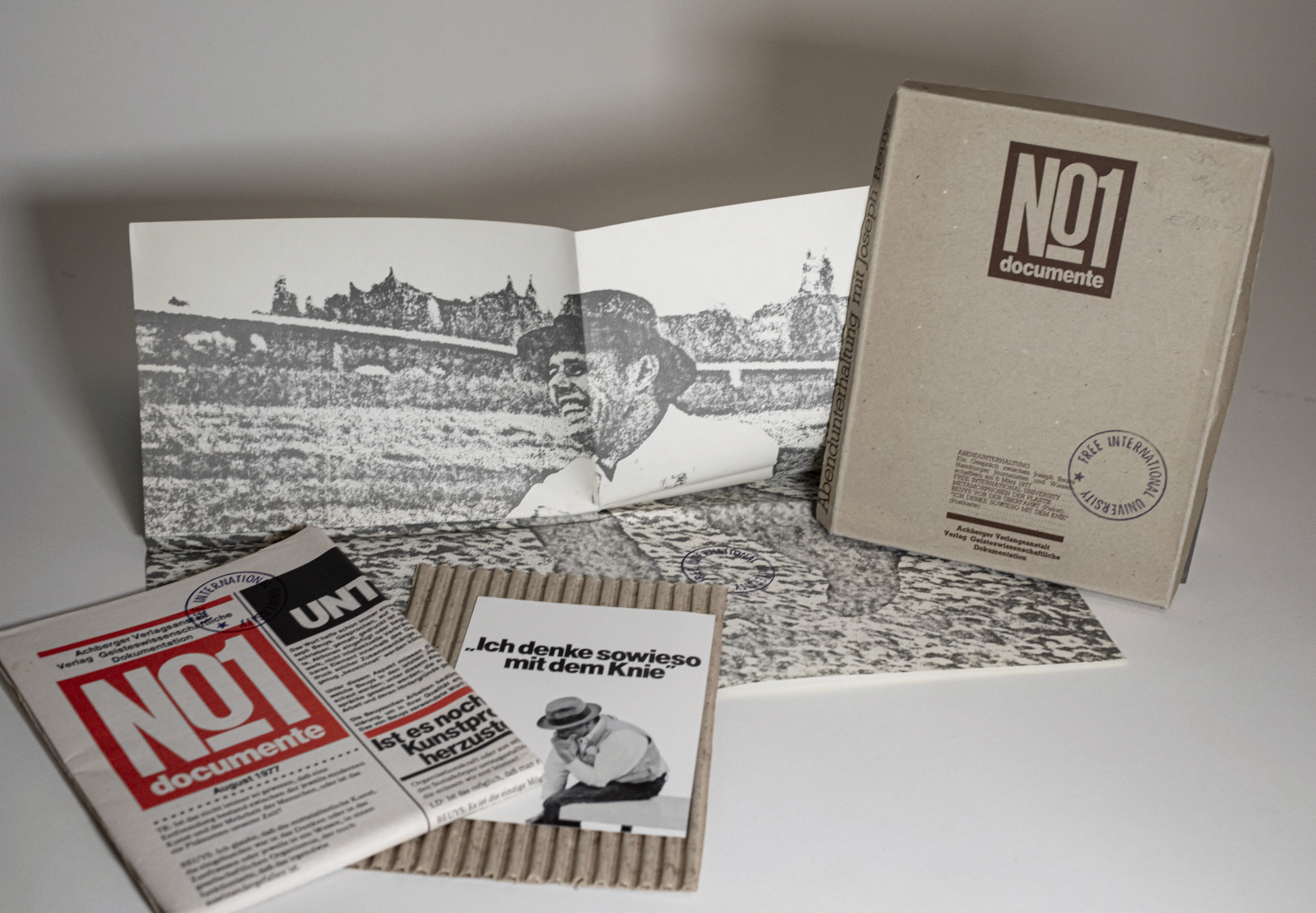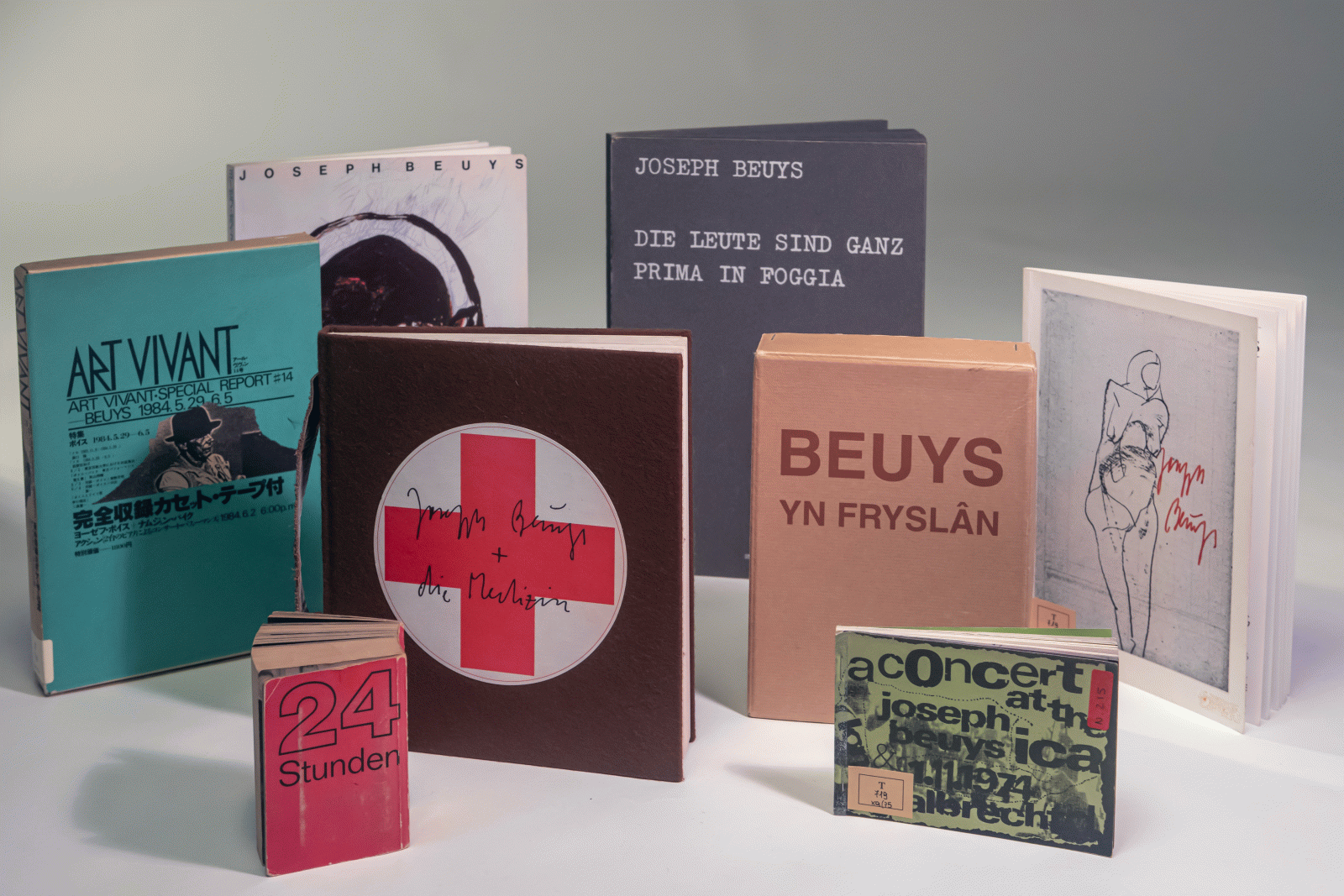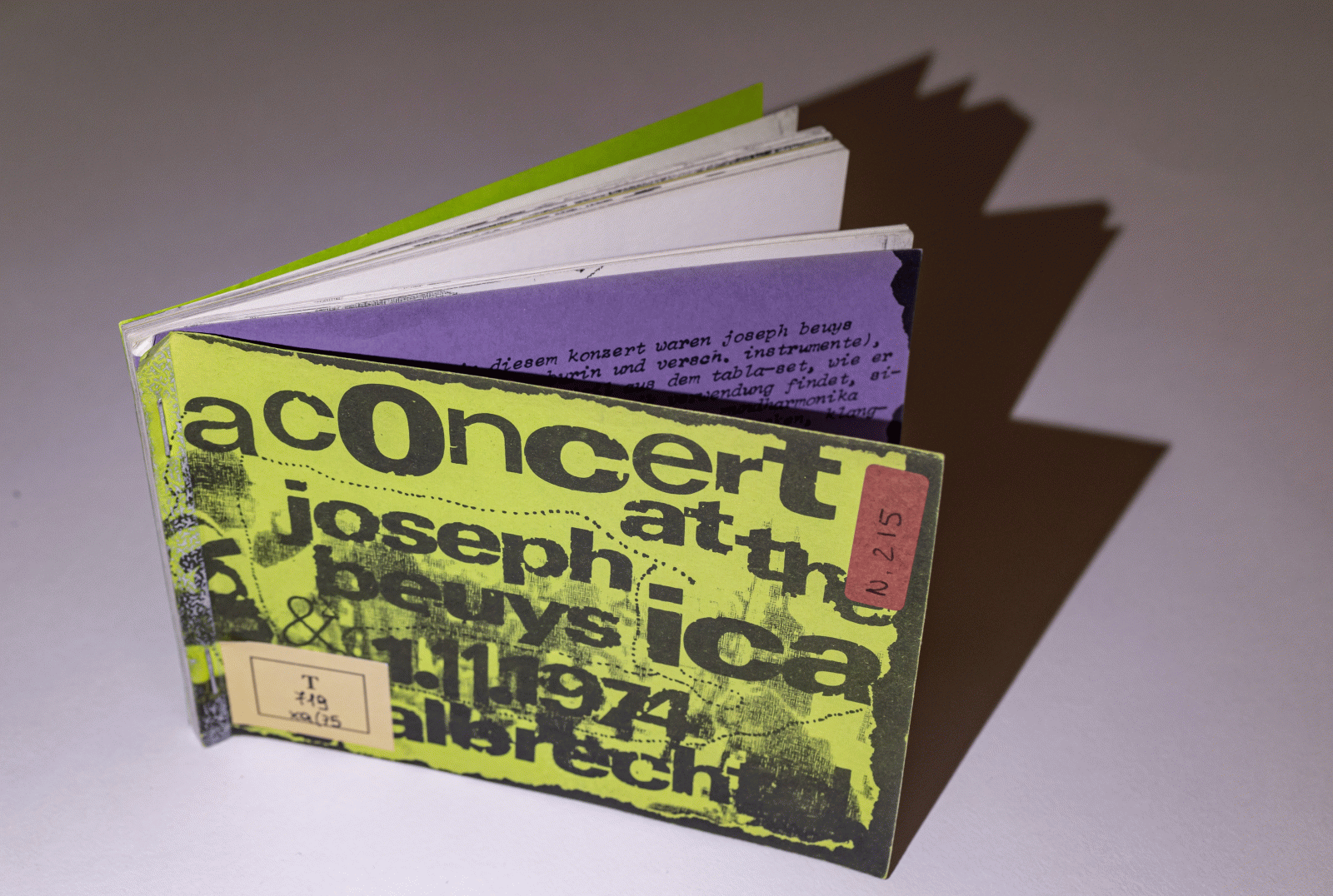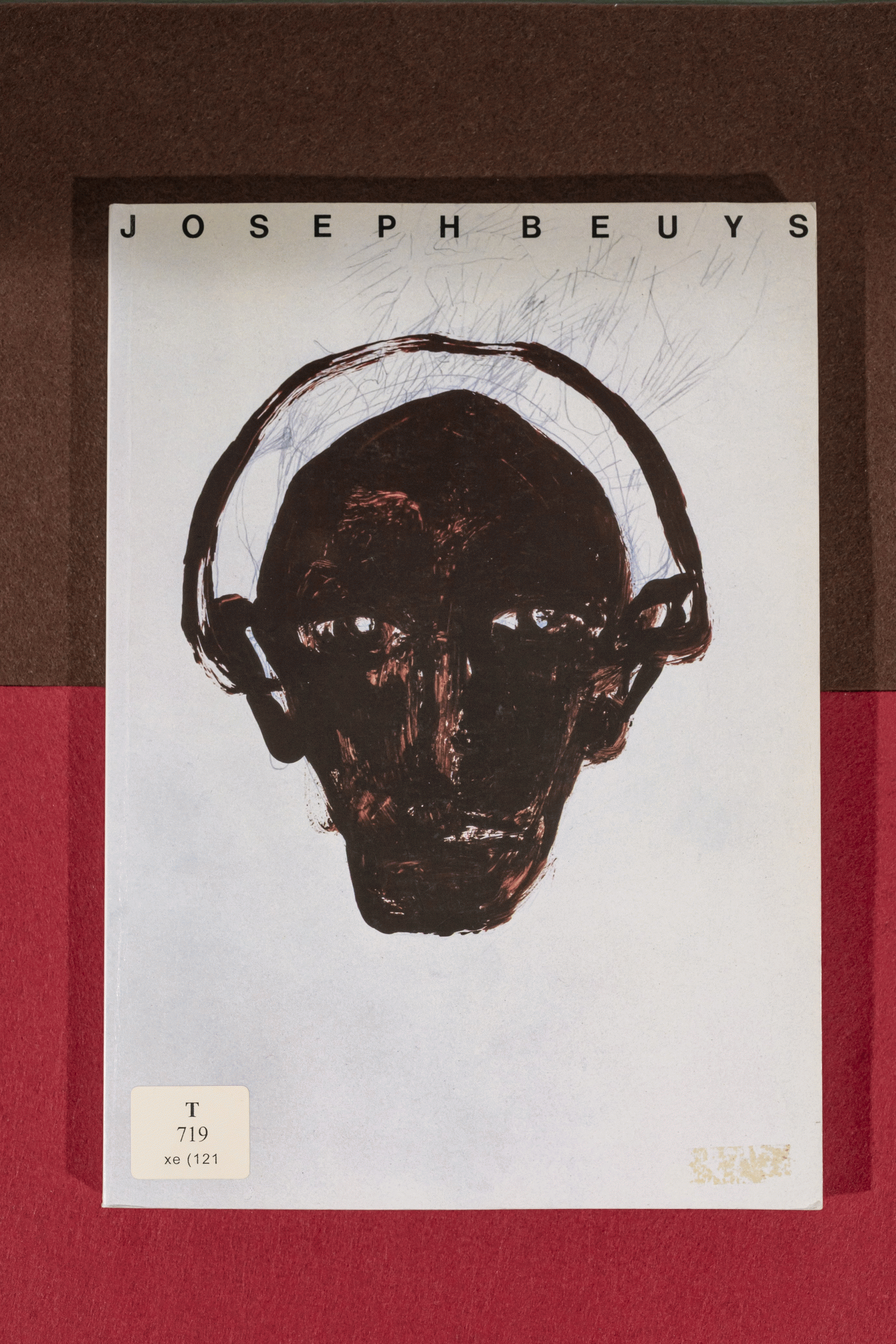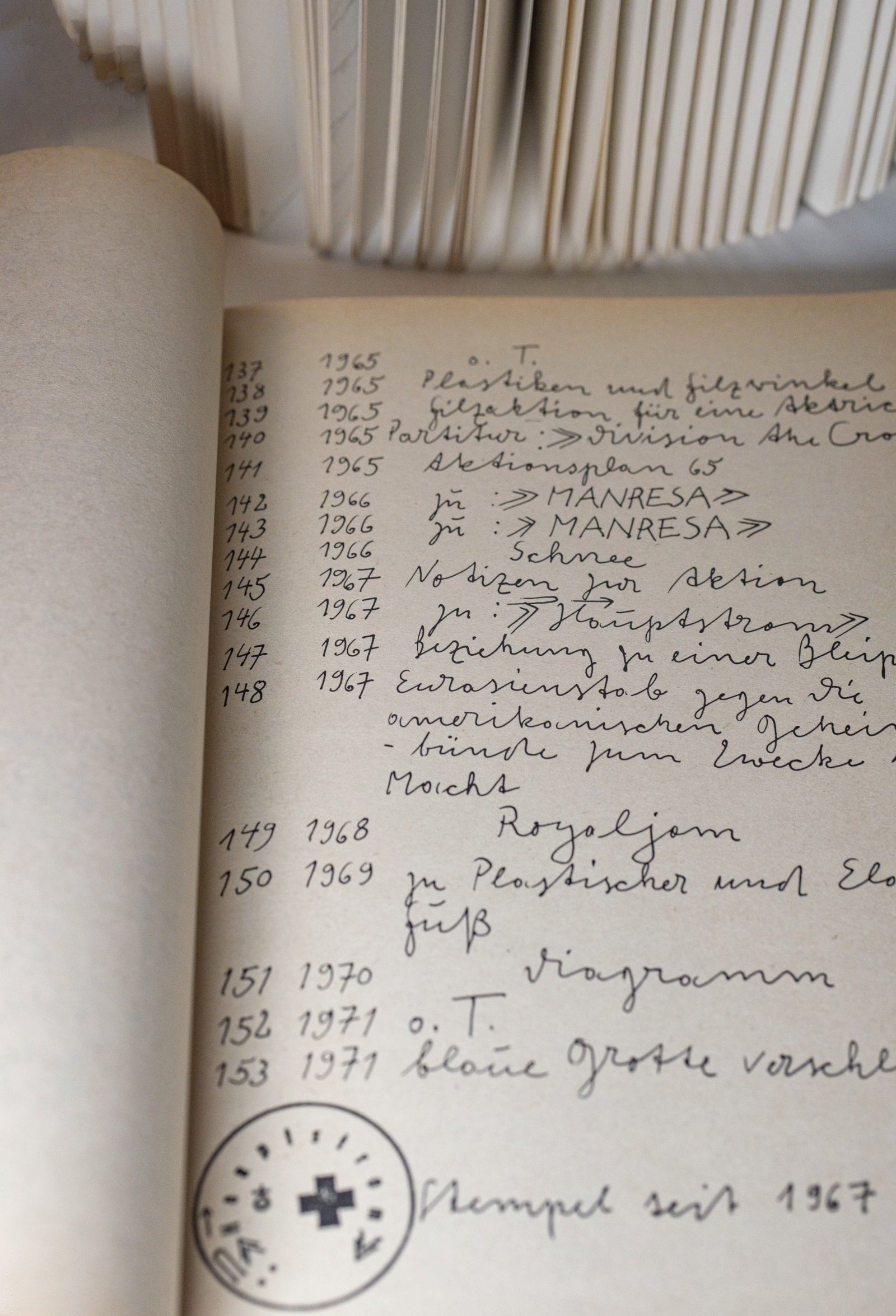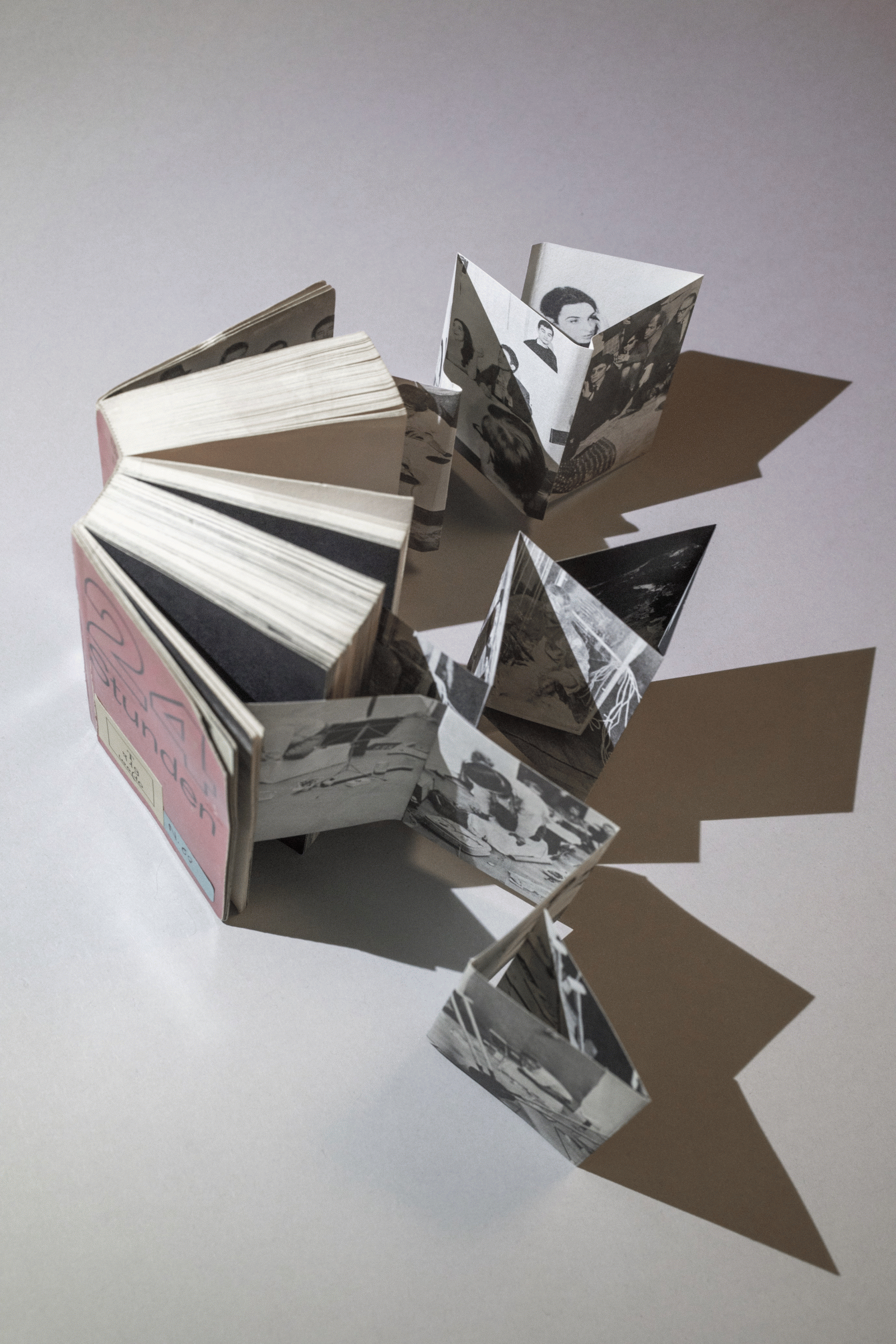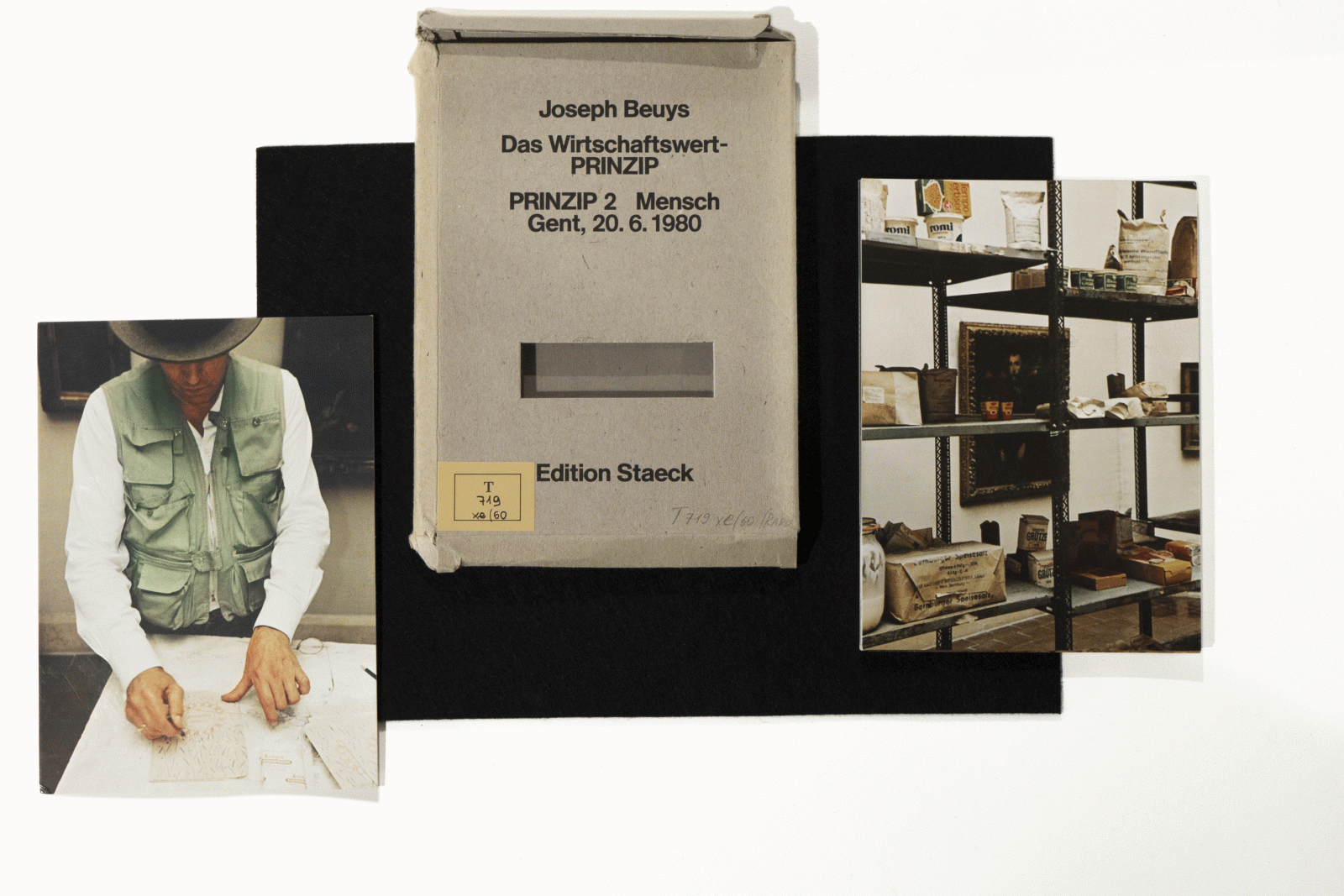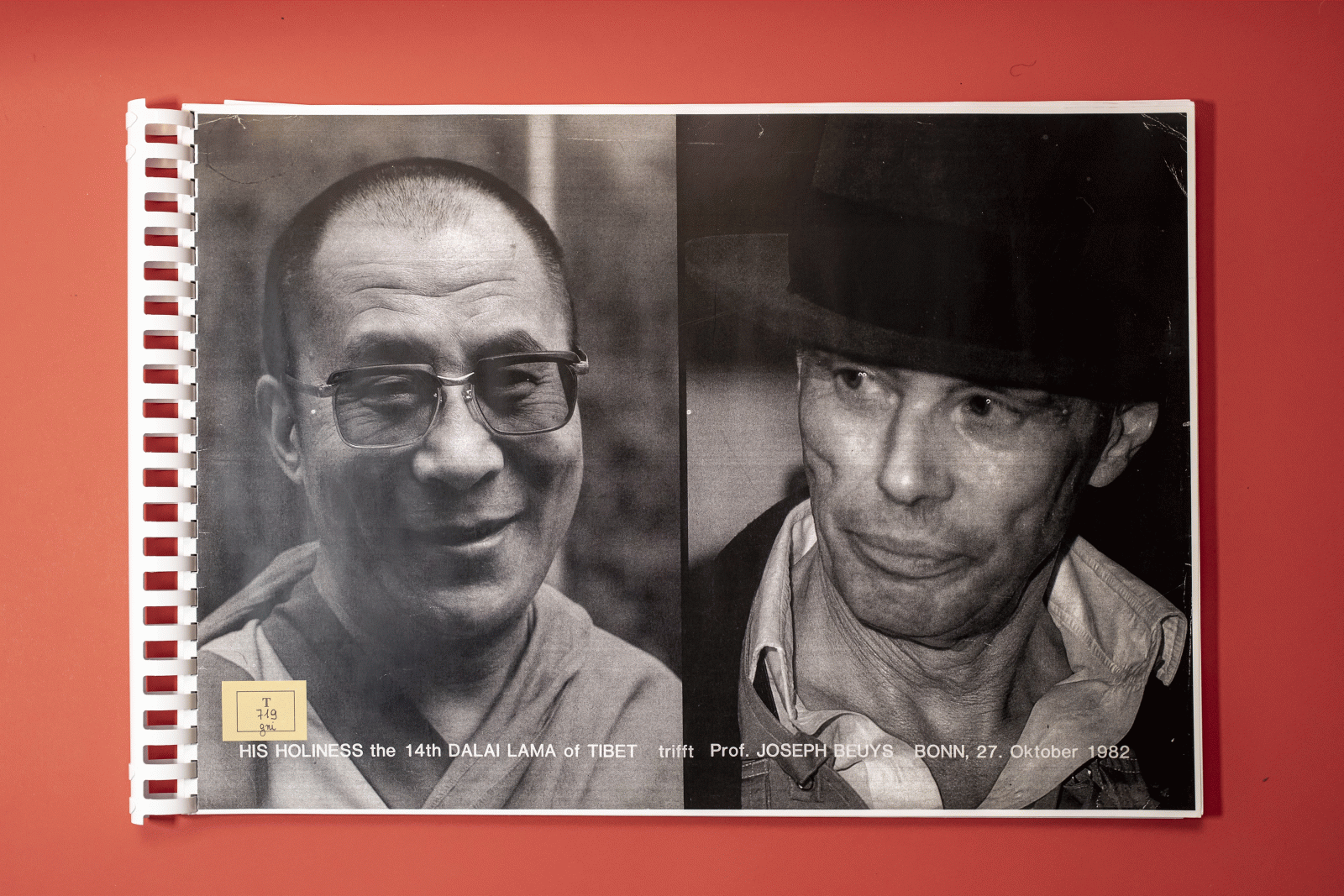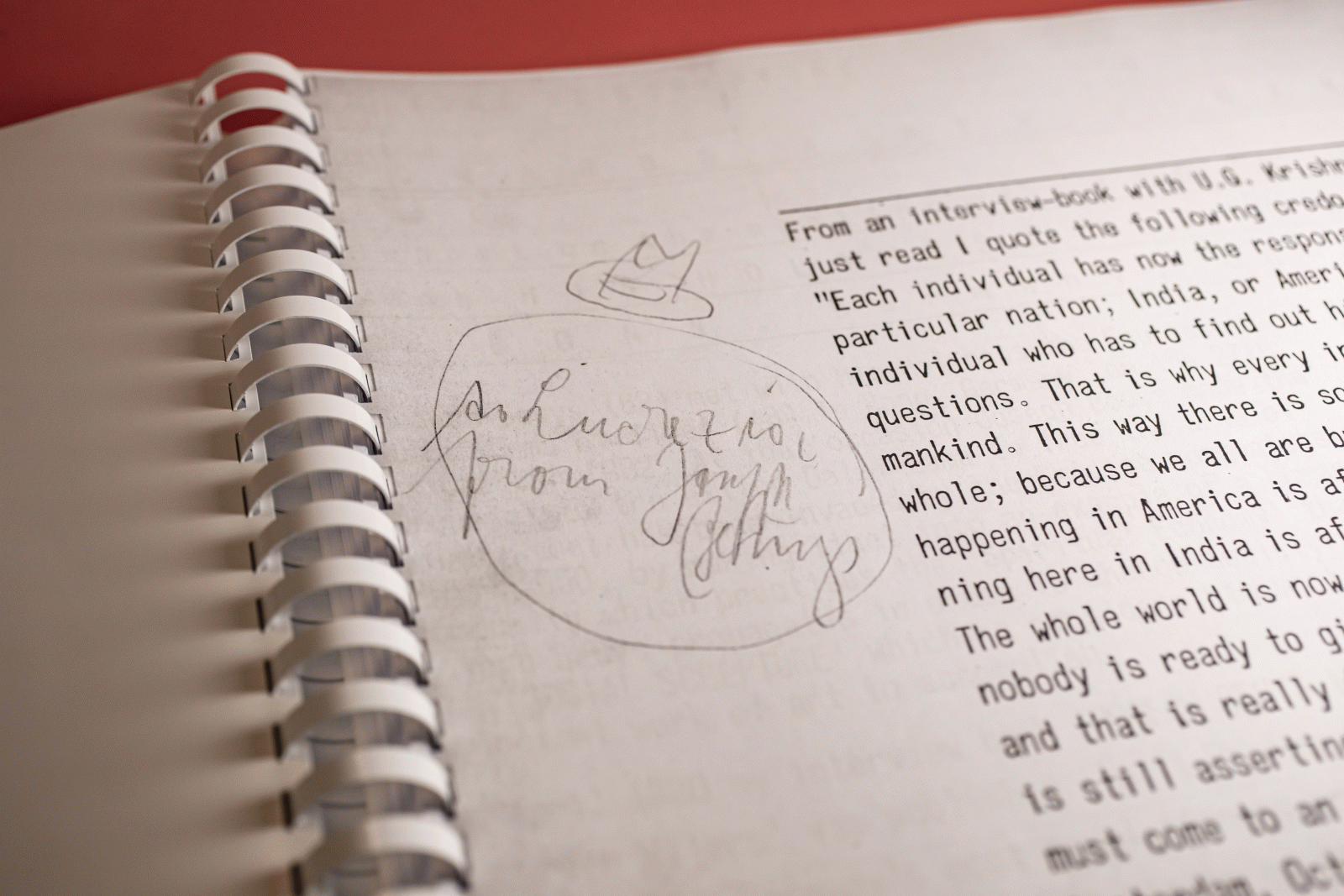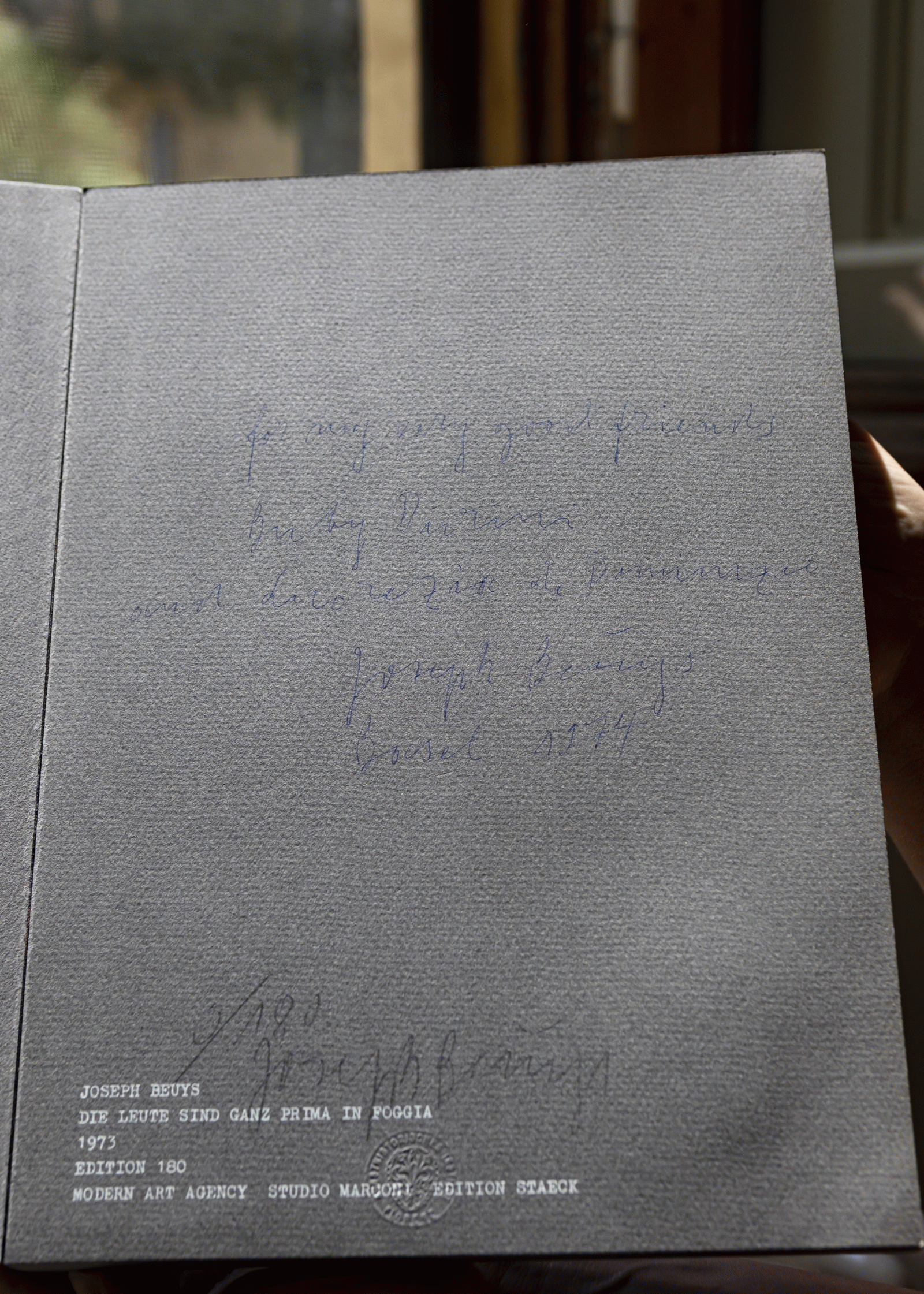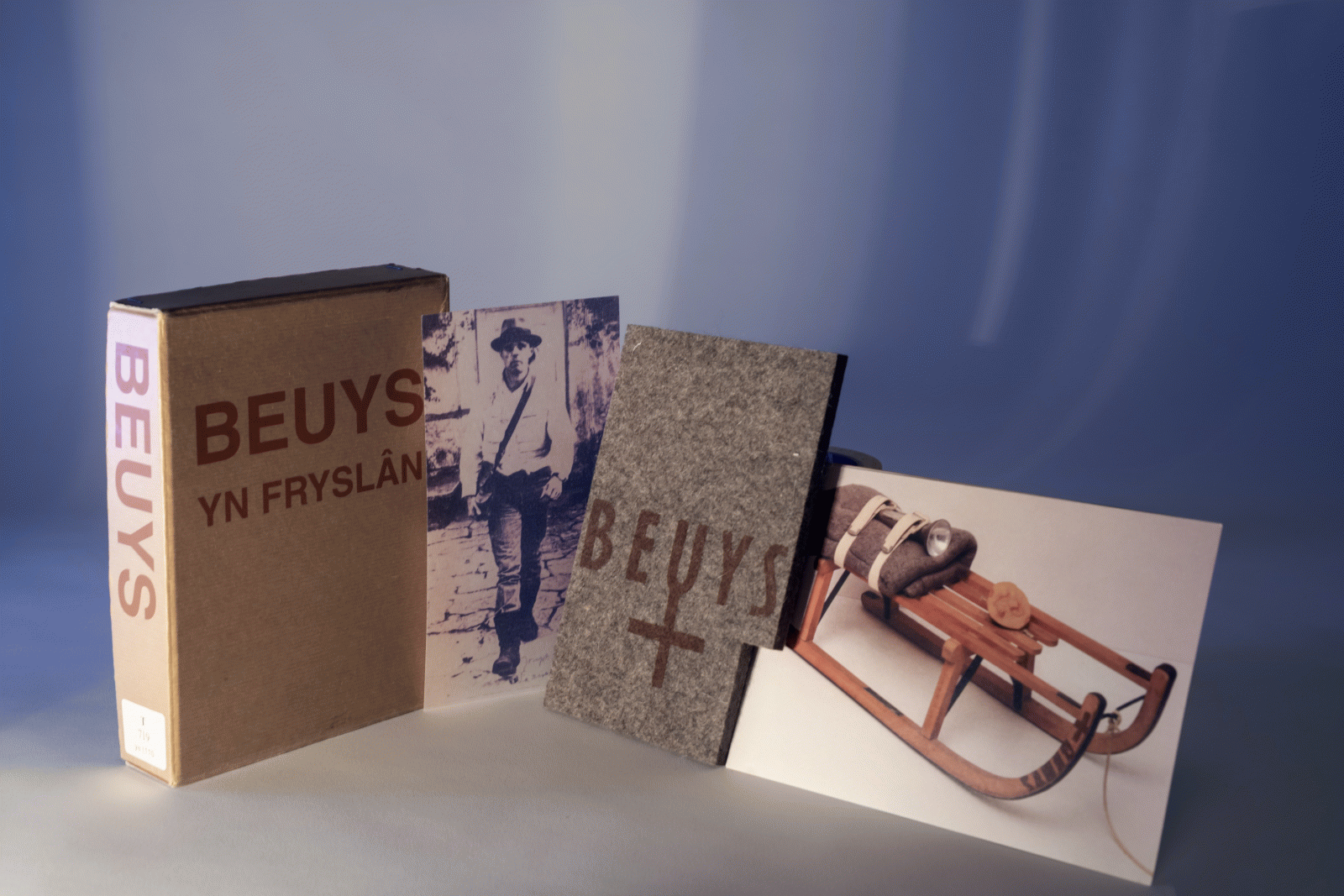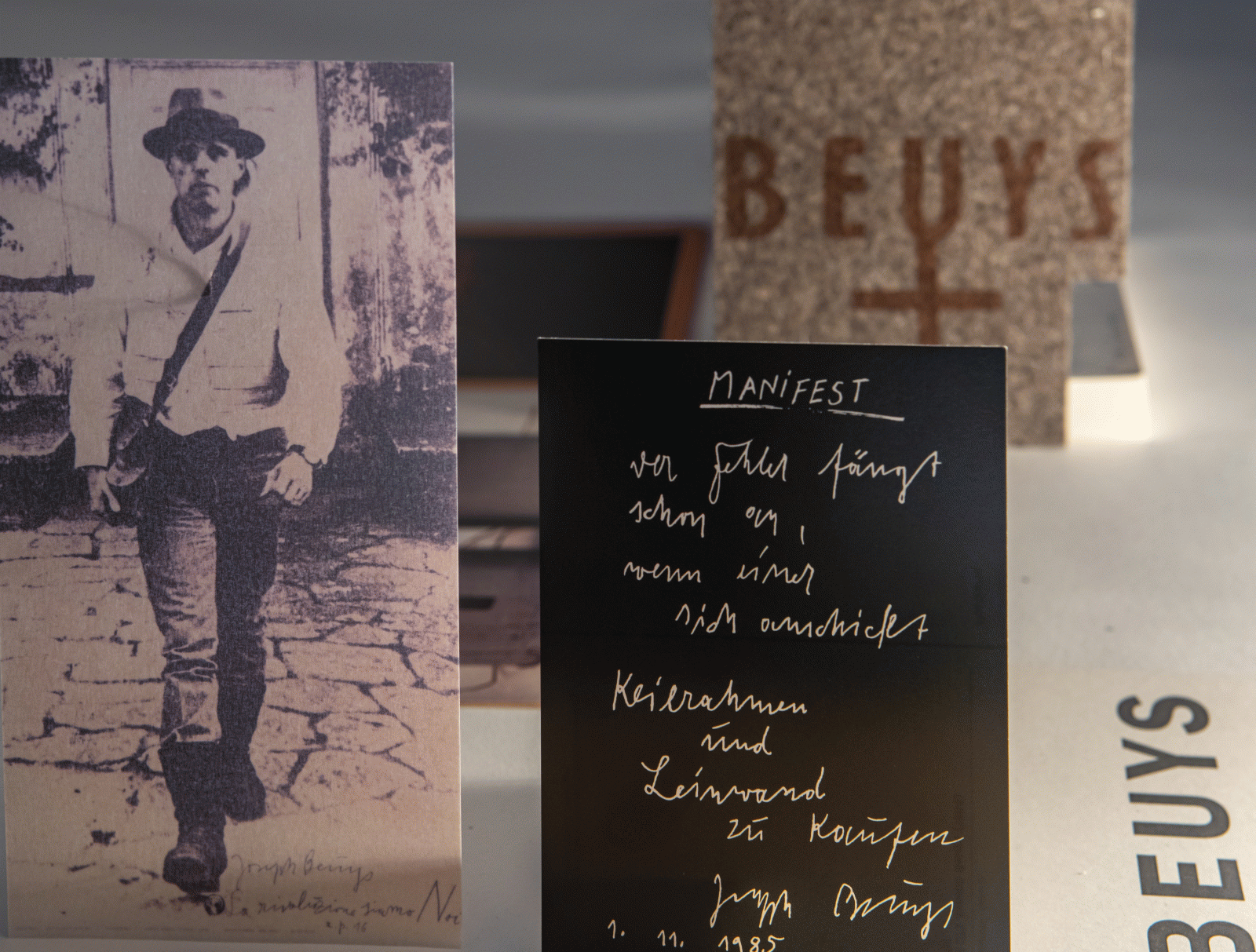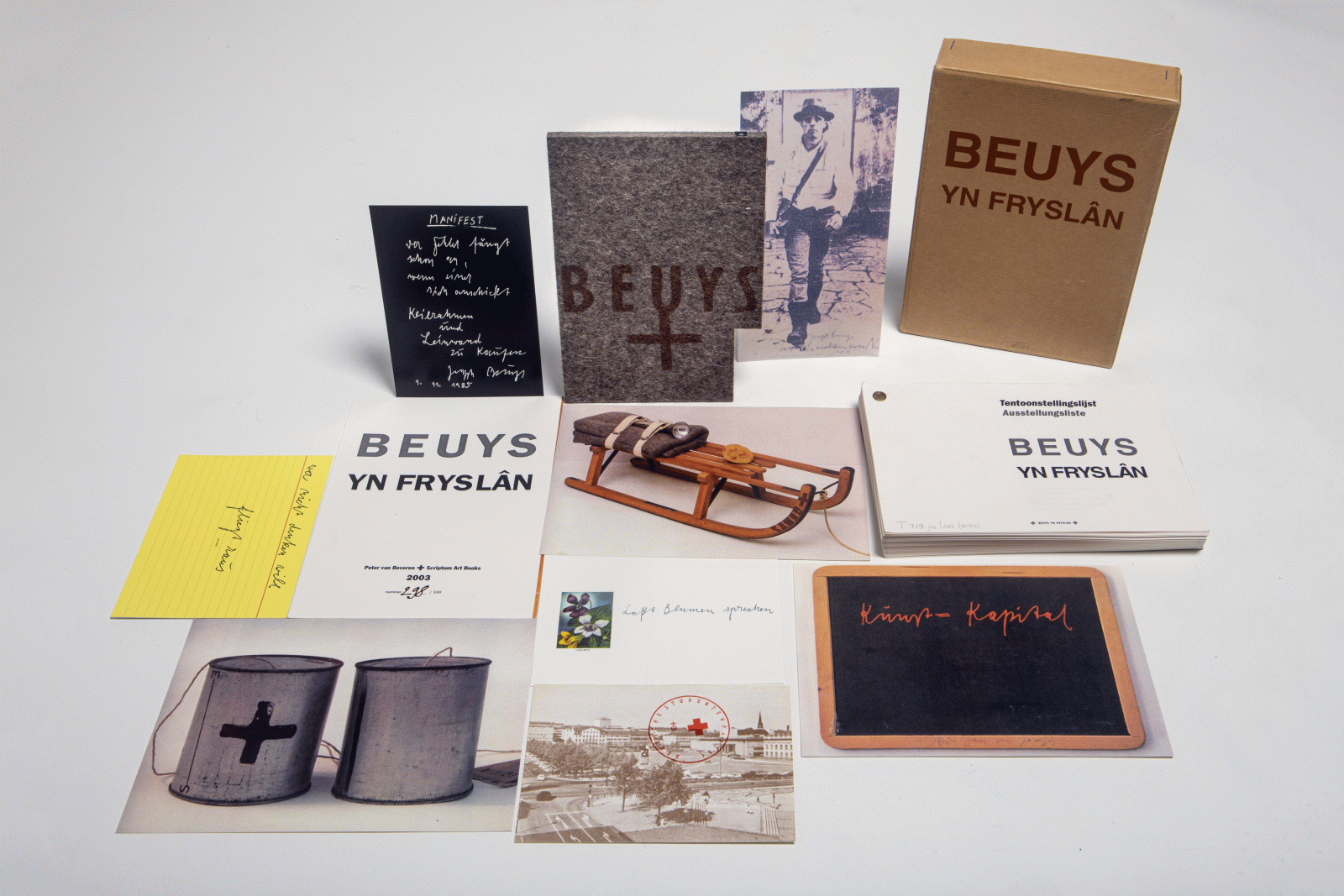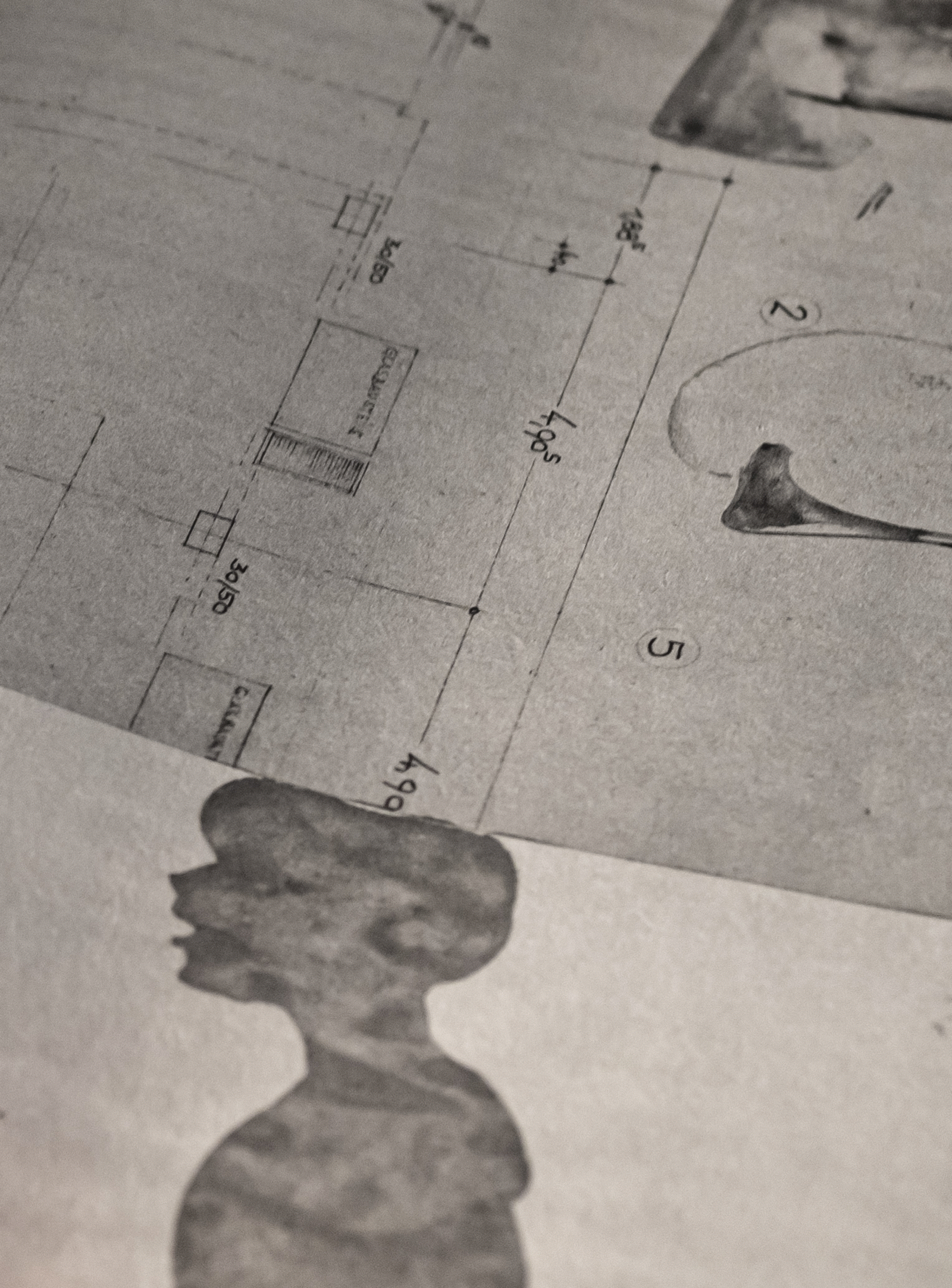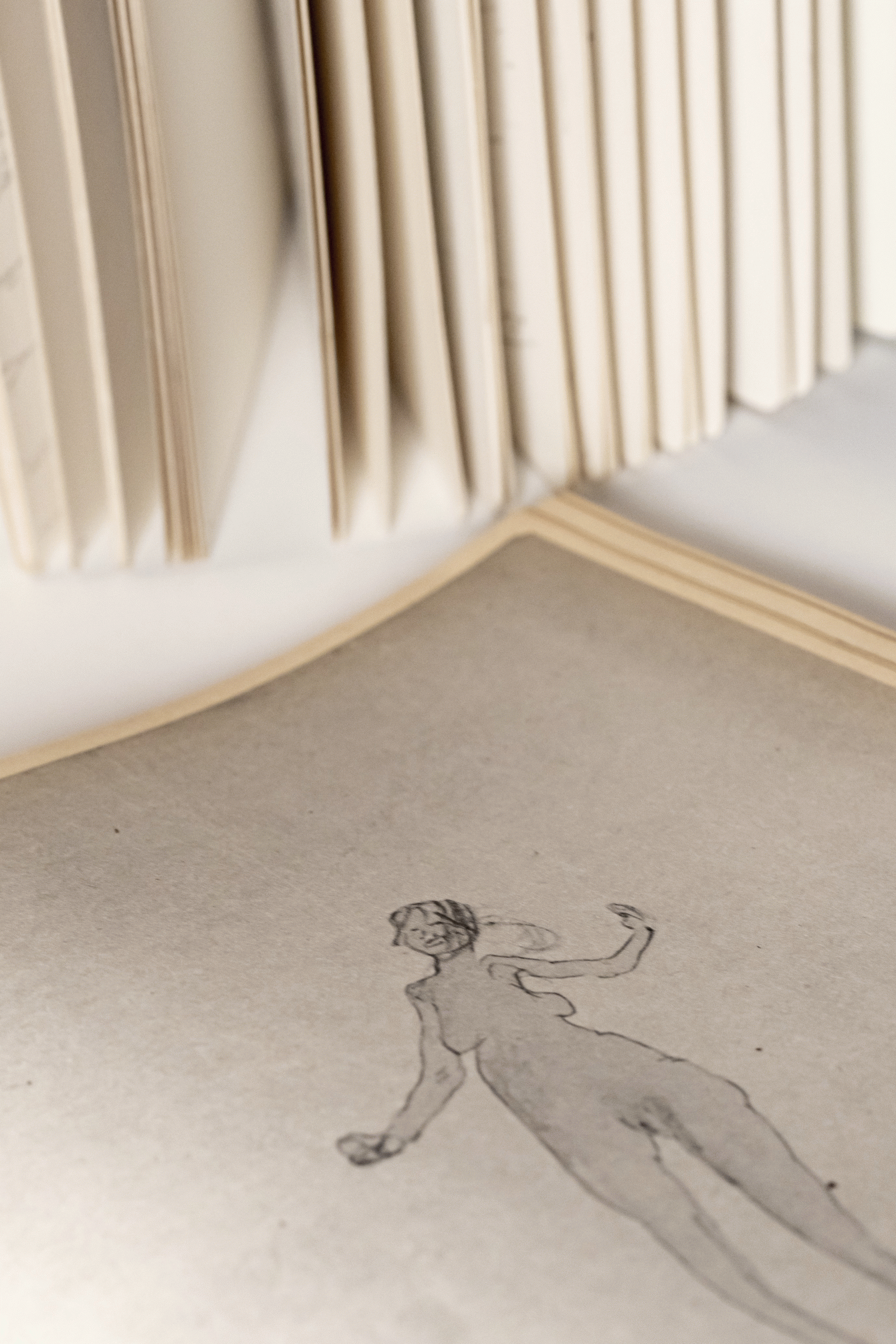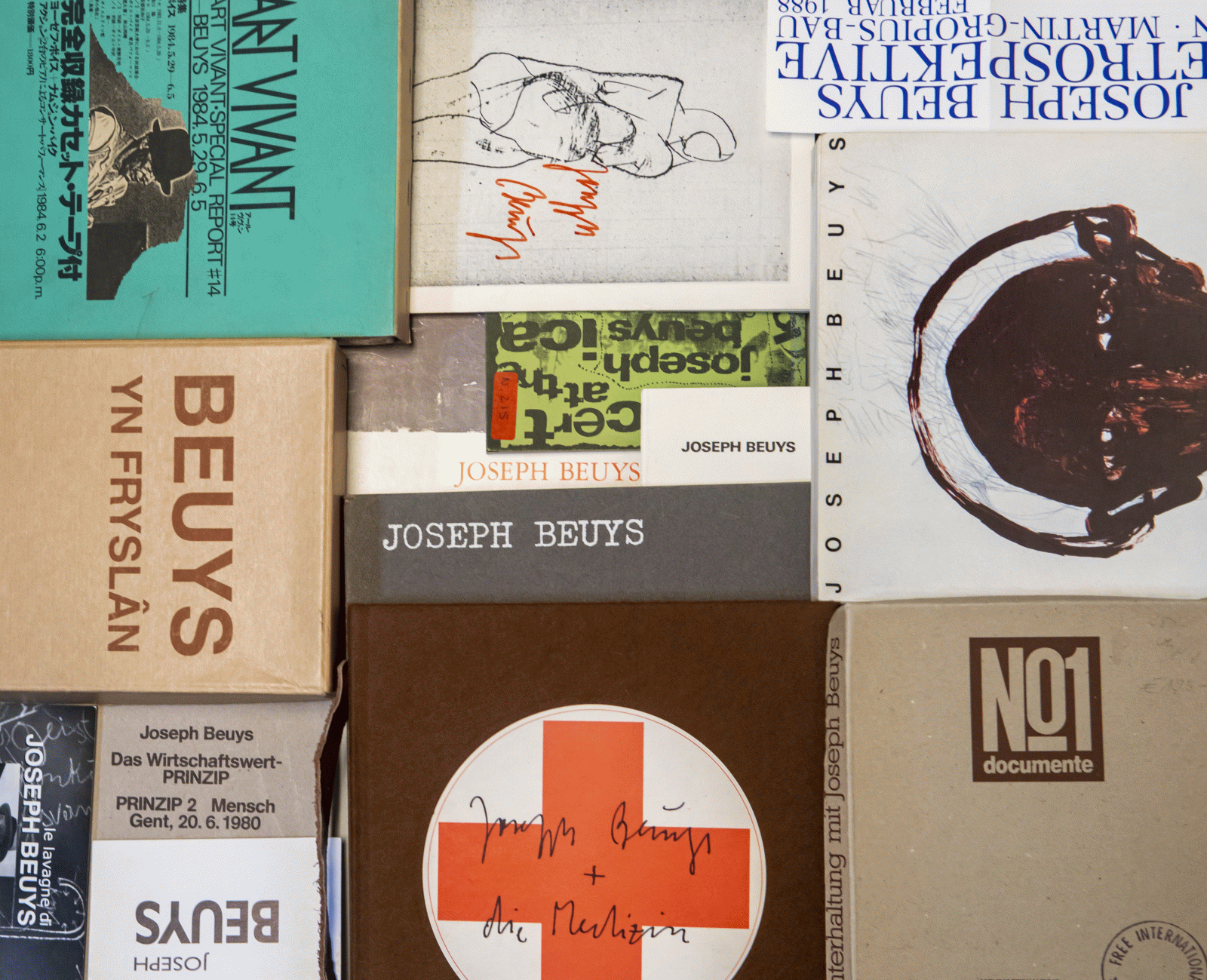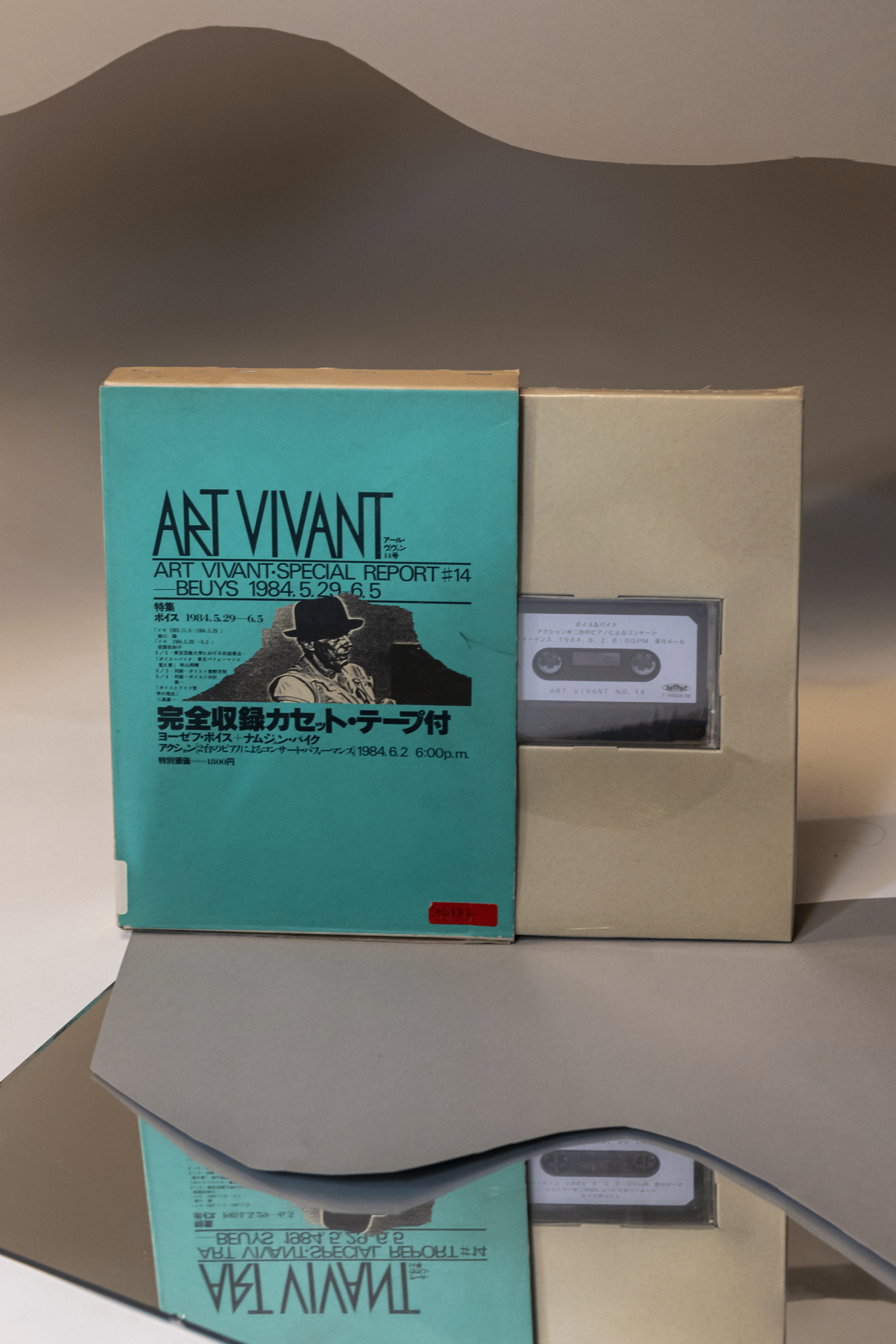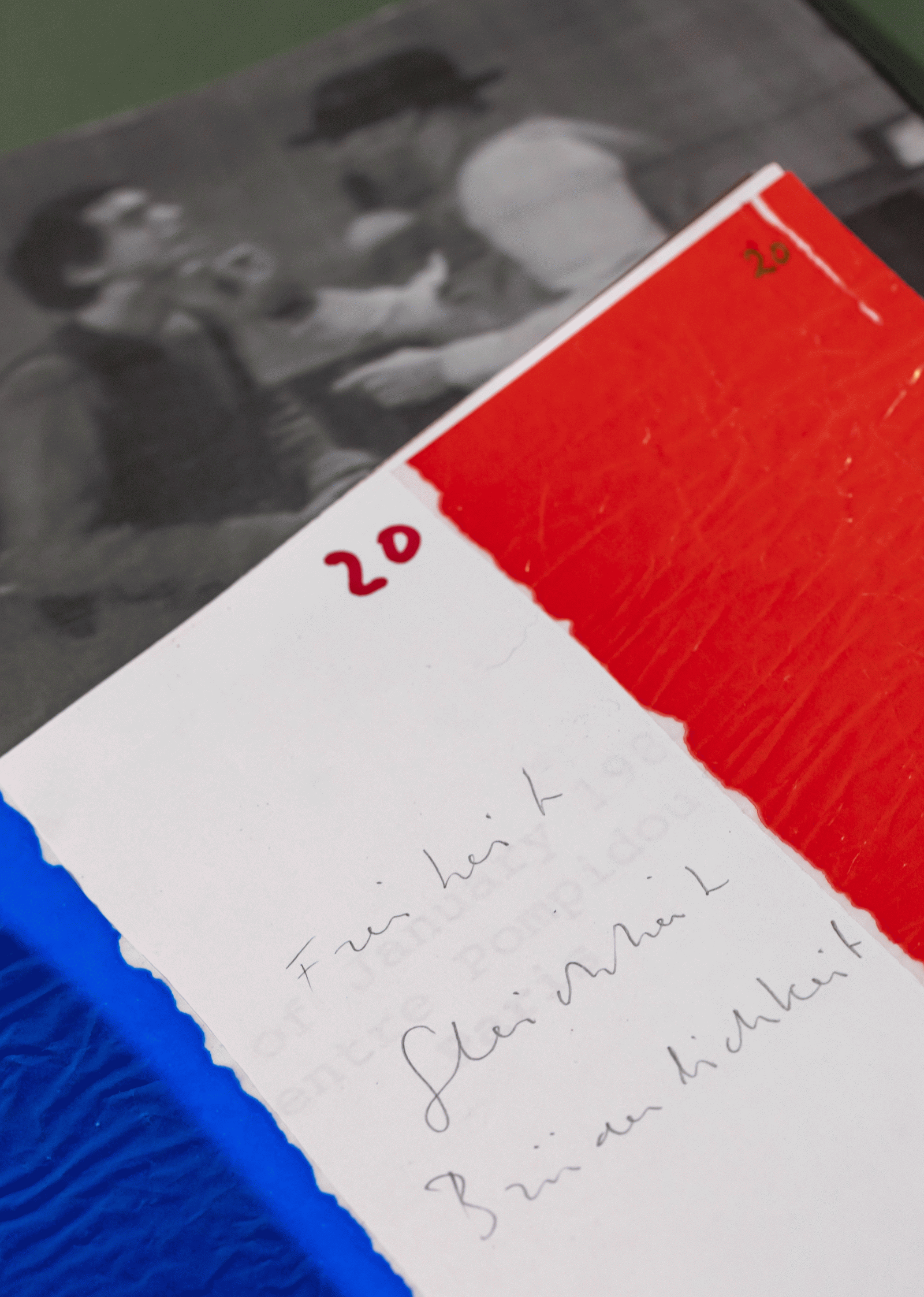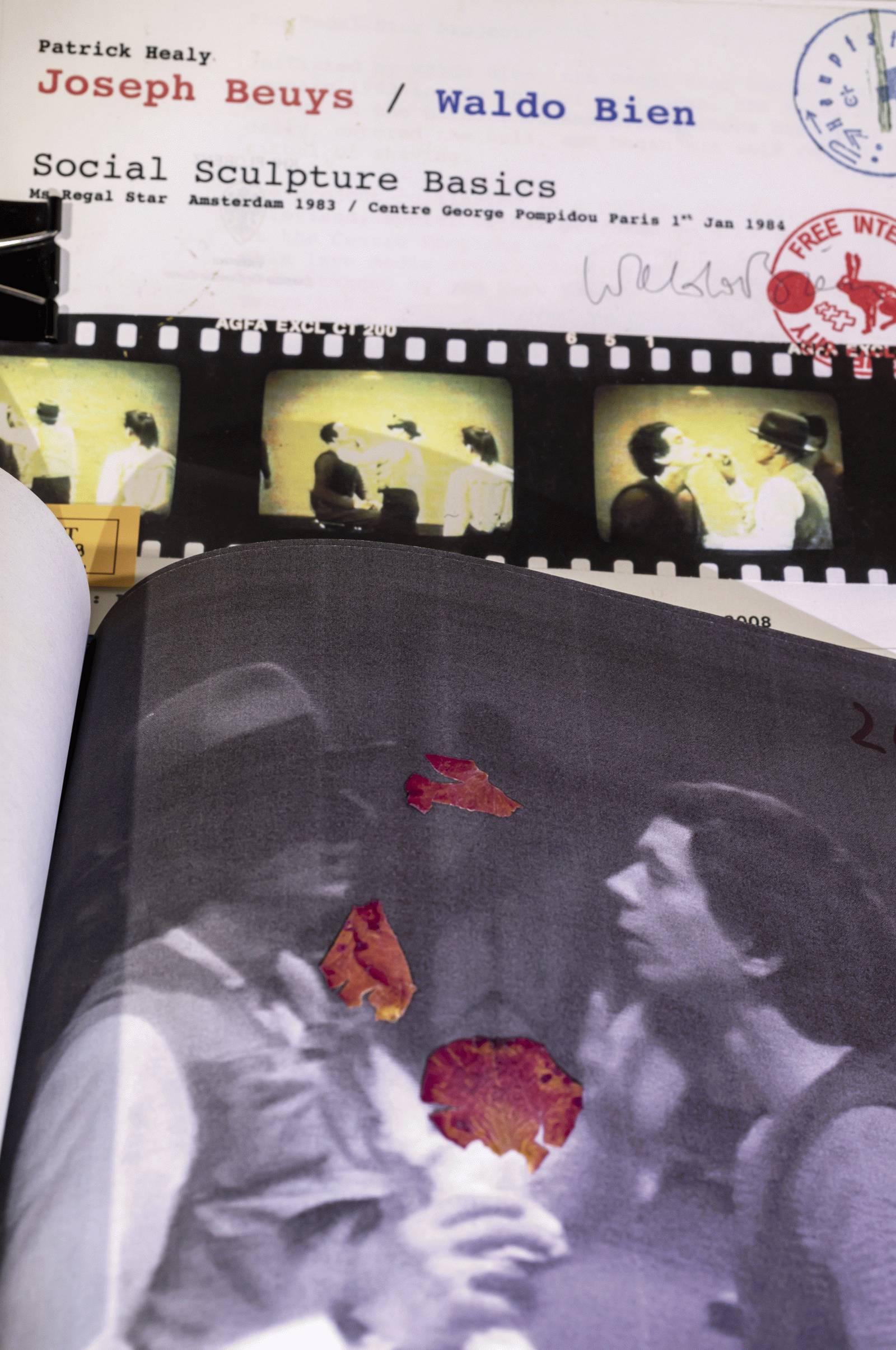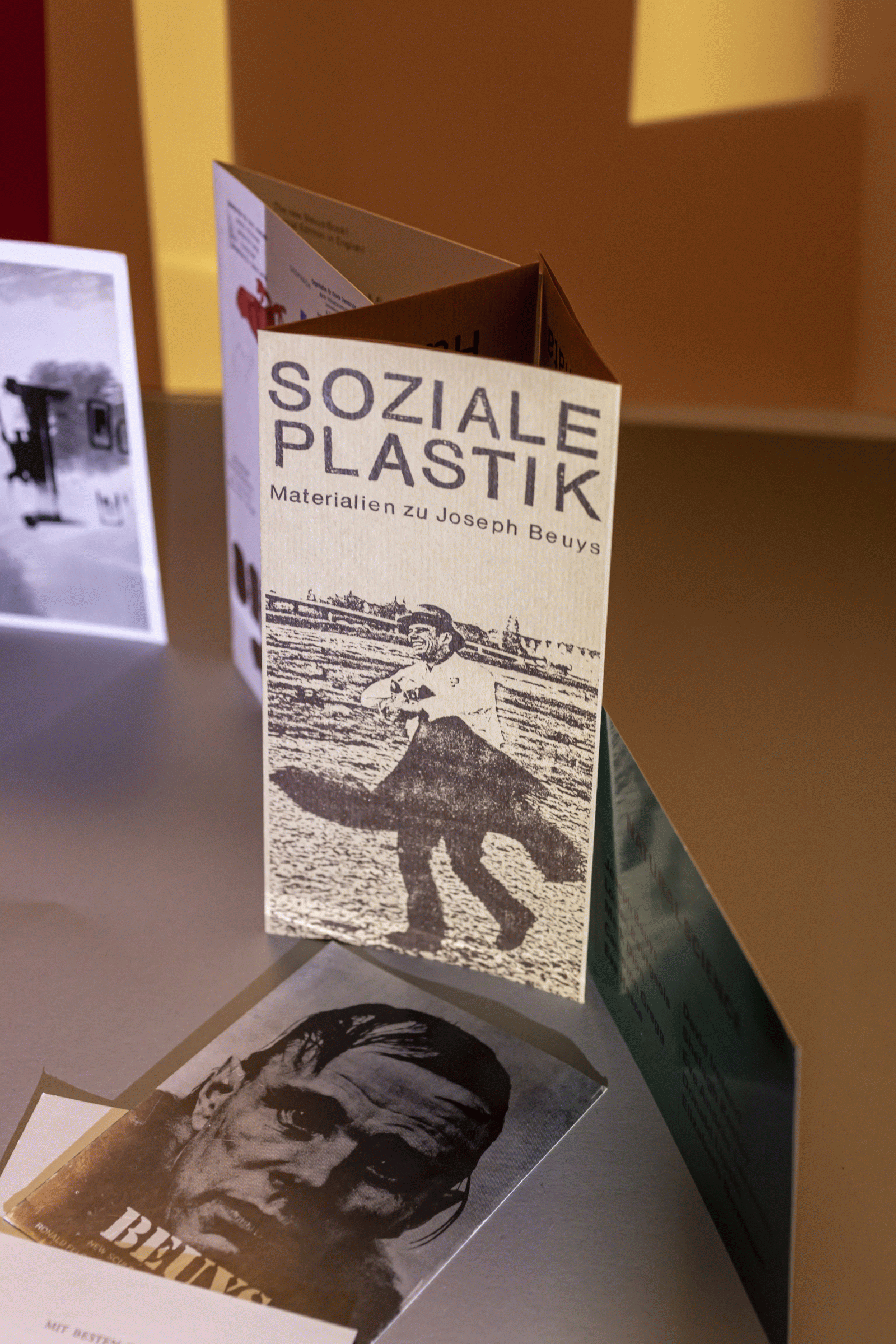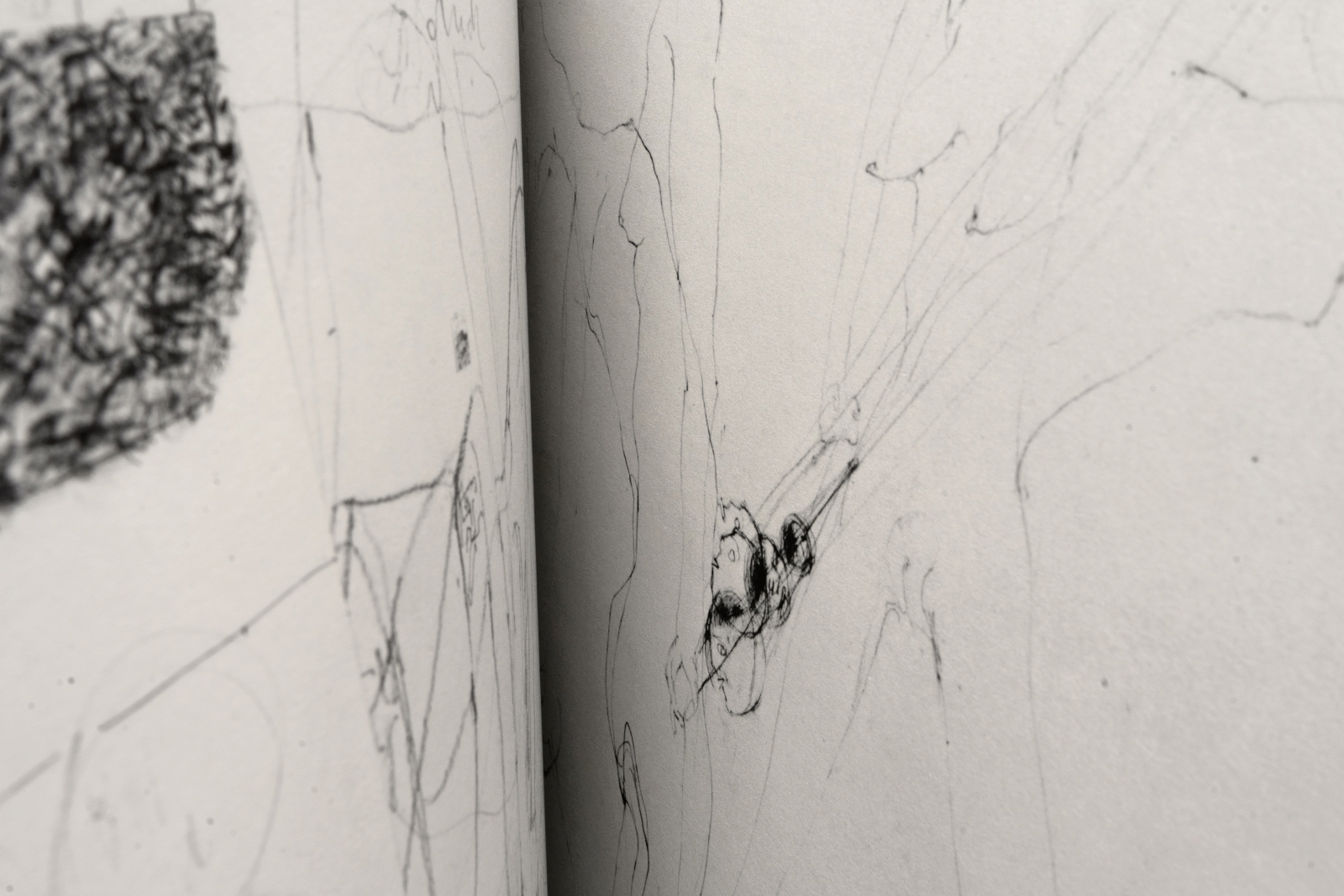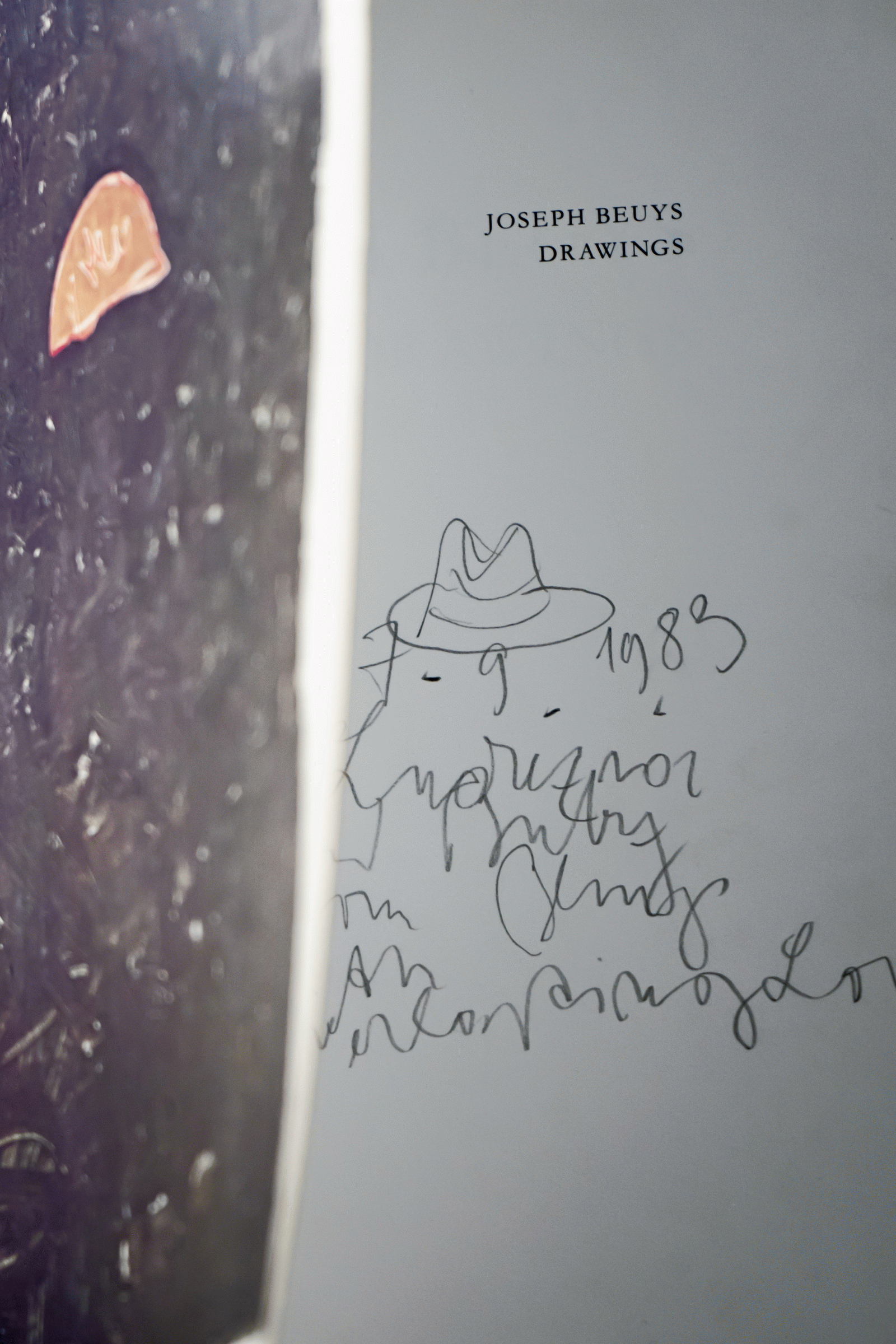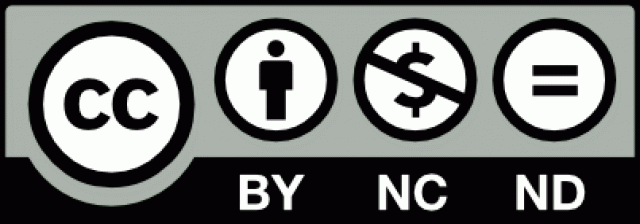Joseph Beuys collection
A new collection focus at the Kunsthistorisches Institut in Florenz
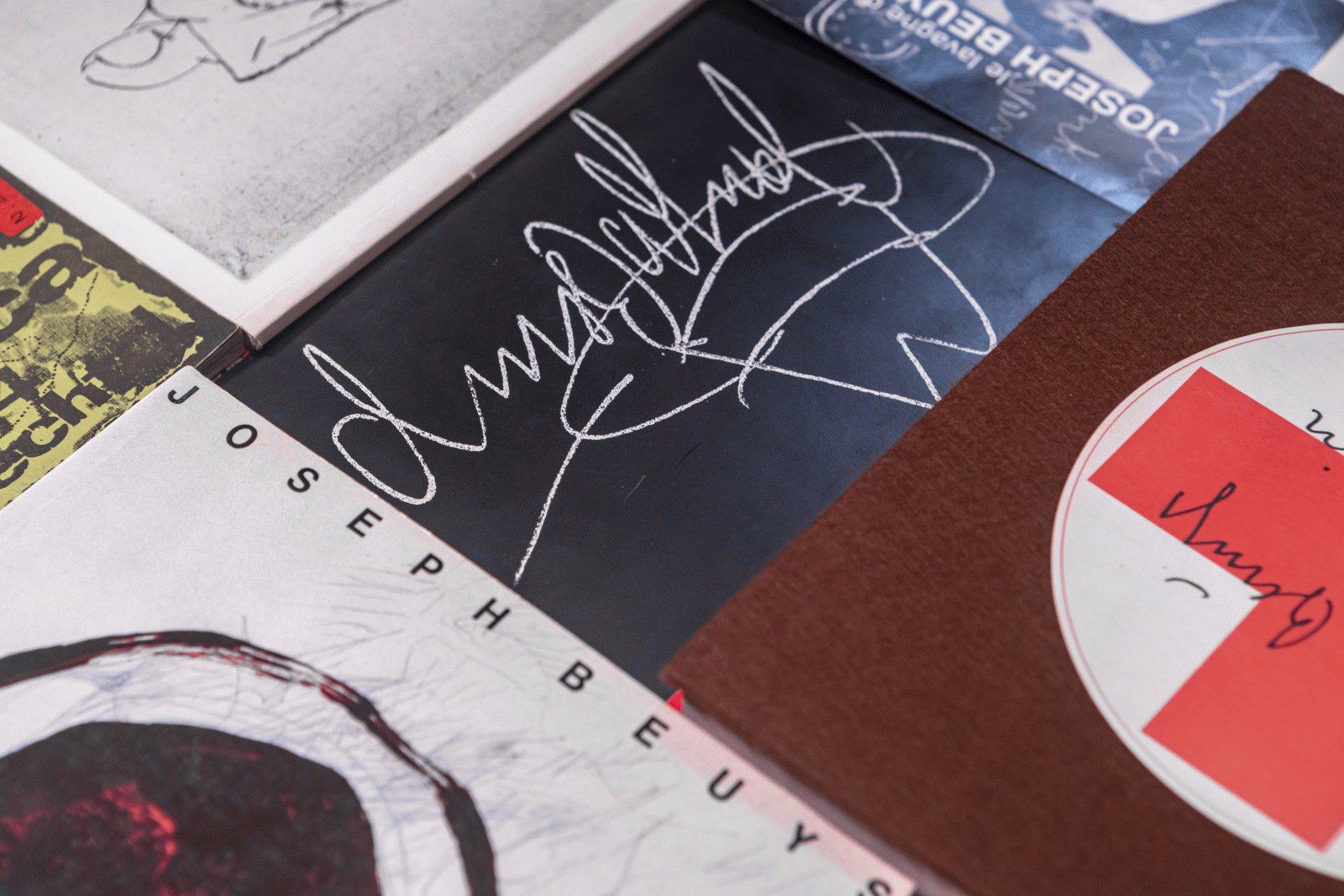
The Joseph Beuys collection acquired by the Library of the Kunsthistorisches Institut in Florenz from the private collection of Lucrezia De Domizio Durini comprises more than 500 works. In addition to books and illustrated volumes, the collection also includes unusual formats such as audio cassettes, postcards and pamphlets. Many of the works feature personal dedications, drawings and entries by the artist. In this exhibition, selected copies from the collection are presented for the first time to the general public. At the same time, the photographers Bärbel Reinhard and Elisa Perretti (Fondazione Studio Marangoni) explore the sometimes bulky and definitely unconventional formats of the book objects in creative ways.
No other country in Europe has aroused such interest among Germans, evoked such enthusiasm and downright longing as Italy. Countless literary and pictorial testimonies have immortalized the often pilgrimage-like journeys made over the centuries. In euphoric tones they often describe landscapes, buildings and works of art, people, customs, music, cuisine, and much more. Not infrequently, the country and its rich culture became a role model for the rapturous Germans, transported into the typical ideal. The founding of the Kunsthistorisches Institut in Florenz (KHI) around 120 years ago took place in the shadow of this ideal when the “uninterrupted contact of German research with the [Renaissance] art of Italy”, “this highest school”, was a prerequisite for the correct assessment of the national art “of the North”. However, just one generation later, in 1927, Wilhelm Waetzoldt, the new chairman of the sponsoring association of the KHI, stated in his book on the ‘Changes in the Longing for Italy’, that the Italy “of which the fathers dreamed” no longer existed: in his opinion, the country had become “too close, too familiar and too related”, and furthermore that the “experience of the journey to Italy had been trivialized”. So, the longing for Italy became nothing more than a fantasy projection, now seen from a historical perspective. Nevertheless, regardless of how the phenomenon is viewed, the encounter with Italy undisputedly had an enormous impact on numerous artists of ‘the North’. Waetzoldt describes this by using an historical synopsis, concerning the period from the late Middle Ages to the 19th century, and subsumes that these “interpretations of Italy” can neither be omitted from the history of European art, nor can there be the “only correct one”. In other words, it was less about personal feelings than the need to scientifically classify the findings. If Waetzoldt's writing, or at least his epoch, represents something similar to a turning point in perspective, it also marks a milestone in the history of the KHI's library when the artistic interrelationships between Germany and Italy, however one-sided they might have been, were considered an art-historical phenomenon and thus a research topic. The titles collected to date comprise several thousand volumes, including numerous travelogues.
If, after these preliminary remarks, we now go on to consider Joseph Beuys’s role in the library of the KHI, some further explanation is required. First of all, Beuys undoubtedly belongs to the group of German artists who dealt intensively with Italy. Although, he initially came to Italy as a soldier in the Wehrmacht in 1943/44, his letters, full of enthusiasm for “this wonderful country”, and especially for the landscape which he saw above all as a cultural landscape shaped by man, reveal that he was entirely rooted in the tradition of the aforementioned admiration for Italy. Far more significant, however, were his encounters with Italy from the 1960s onwards, when Beuys was already teaching as a professor of 'monumental sculpture' at the Kunstakademie in Düsseldorf. At the same time, he became known in Italy not least for attracting, with his art, the interest of key figures of Arte Povera. His friendships with the gallerist Lucio Amelio (Naples) and the patron Baron Durini, and his wife Lucrezia De Domizio (Bolognano), as well as with Bruno Corà and others, would ultimately bind Beuys closely to the south of Italy, both artistically and physically: as documented by numerous exhibitions, (political) actions, longer stays, and surviving anecdotes. Besides these already meaningful reasons to consider the artist as significant within the collection of the KHI, there are more. In fact, in the 1960s the library began to collect art-related literature, focused on Italy, dating from the 20th century to the present day. Therefore, the KHI library has witnessed the growth of an outstanding department, also in terms of quantity, which represents the basis for the corresponding research. Undoubtedly, it is not necessarily appropriate for post-war art to concentrate on one nation. Recent efforts to broaden the perspective can only be selective, nevertheless the successful acquisition of the private collection of literature on Beuys from the estate of Lucrezia De Domizio Durini (over 500 works) in 2017 was a decisive step. Like almost no other artist, Beuys connects different art movements, media, numerous personalities, and several nations. So far, the controversial discussions Beuys initiated concerning art and its relationship to politics and nature have not died, nor lost their relevance. Furthermore, they continuously challenge us to ask new questions and always from different perspectives. It is, therefore, no exaggeration to describe the Beuys Collection at the KHI as a kind of cornerstone, or at least a new focus, in the context of which we expect intensive and diverse research activity to occur. Another fundamental aspect lies in the artist's and his work’s extraordinary iconic symbiosis with the medium of photography. By considering long-term research on photography in its historical, medial, and material contexts, anchored at the KHI, Beuys’s case and the extensive photographic-documentary tradition in the literature will be of great interest.
With the selected works of Beuys displayed below, we aim to provide a broader public with an initial insight into this collection. The focus remains on books and book-like objects which stand out for their physicality and materiality. In Bärbel Reinhard and Elisa Perretti (Fondazione Studio Marangoni) we have found two professional photographers who, with great commitment and enthusiasm, took on the task of photographing book-objects, some of which are challenging and others stimulate the senses in an unconventional way. We would like to take this opportunity to offer them our sincere thanks for their contribution.
The only revolutionary force is the force of human creativity.
(Joseph Beuys)
Joseph Beuys is one of the most emblematic and important figures in post-WWII world art history. With his life and work, he is the utmost representative of the centrifugal and anti-traditional energy generated by contemporary art in the latter decades of the 20th century: he managed to incorporate his own persona into art, and art into his persona.
This means a great deal more than the still-unstifled idea of unity between Art and Life, because Beuys, placing himself within the work of art, intended to underscore the anthropological power of all art. He was first and foremost a man who loved mankind and “nature, our mother,” in which all men live.
He invented no method, but he dedicated his life, with a generous dose of humanity, to the pursuit of improving existing methods in the society he inhabited.
Beuysian philosophy is based on two concepts.
The first: all men on Earth of any profession or trade possess a “free” creative energy which, when put into action, produces good for oneself and fruitfully benefits society.
The second: his famous Living Sculpture made up of men of different origins and different economic, political and cultural statuses, united by a supportive and “free” form of collaboration. Always in pursuit of the Common Good.
To help people understand his noble art, Beuys employed symbols and slogans more than any other artist in the world. And this is why I call Beuys the
Sculptor of Forms and Sculptor of Souls.
As concerns this definition of mine, for his Social Sculpture – the Living Sculpture –, he made use of invisible materials like gestures, words, smells, noises, sounds, behaviours, even the mythology of his own persona, to generate a process of mutual collaboration among different men in keeping with the concepts of freedom and human creativity: Unity in Diversity.
Beuys SCULPTOR of FORMS
He also utilized visible materials in his works, like felt, grease, iron, plants, wood, animals, honey, oil, stone, chocolate, wine and paint, all of which are to be interpreted as “substances”, “vehicles” of his understanding of the energies that lend meaning and purpose to life.
So we can recognize that the materials used for his works, actions and discussions have nothing to do with those utilized by Arte Povera or by the strictly formal American minimalists. The materials Beuys employed went beyond pure representative process to interpret the flow of human energy in the natural, primitive sense, the flow of life and death, of man and social civilization in art.
In this context I feel the need to clarify what photography and the signature represented for the German Maestro.
Beuys was the artist who early on realized the importance of “propagandizing” his credo through his own image, using every possible means – I want to reiterate that –, even his own body and his own mythology.
An artist must see his own work as a photo, an open, unfinished, non-finite image
(Joseph Beuys)
Photography is a means to memorialize or symbolize a concept. Beuys made extensive use of it to express his metaphorical language.
He loved to have himself photographed as an extension of his thoughts, and he felt the same way about his signature. In fact, he signed any object that he was asked to sign, but he was also aware that after his death, this habit may have led to mystification and ambiguity in the art system. For this reason, every year, he had his works photographed and catalogued in publications, so as to differentiate them from his many souvenirs. Therefore, the only authenticated Joseph Beuys works are those catalogued in publications published prior to his premature death (January 23, 1986), while the others are simply mementos that we’ll call “souvenirs”, to which the law of supply and demand applies, but which do not pertain to the art market. Beuys was photographed by hundreds of people, and by great photographers, but the photographs by Buby Durini – who used microphotography for his scientific research – have a human and philological meaning, as they cover 15 years with Beuys in numerous countries around the world; they are unique historical documents.
Over the years I have created an extensive library of books on Beuys published in numerous languages by various publishers. I have always looked for them when traveling to other countries; some I have bought, others I have received from friends. Beuys, who knew about my collection, gave me many books that he had signed and inscribed to me and my husband, and a few rare cyclostyle-printed publications.
I had collected over 1000 volumes, cataloguing them year by year, which I jealously safeguarded on a large glass-shelved bookshelf along with my own 33 books published by various Italian publishers, some translated into English and German.
One day, looking at that large display, I had strange sensation … the books were beautiful, but … Mute! And so I decided to offer them to an Italian library so that they could serve their purpose. Since I knew Andrea Tomasetig – one of Italy’s most prestigious librarians – who had edited a special photographic book about Beuys’s Difesa della Natura operation (photos © BubyDurini), I asked him to check with Italian libraries, providing him with a detailed list of the books. It was a year of intense work for Tomasetig, who consulted more than 50 libraries without success. Then I suggested that he contact the most important German library, which immediately accepted the offer, specifying that my collection be sent to Dr. Jan Simane, director of the library of the Kunsthistorisches Institut in Florenz – Max-Planck-Institut.
Every time a book changes hands, every time someone runs his eyes down its pages, its spirit grows and strengthens.
Carlos Ruiz Zafón
Joseph Beuys is the artist who, more than any other, sought to and was able to embody the transcending of art, directing his efforts towards the utopian territory of natural energy and spiritual communication: reality as the phenomenological spectrum of human possibility.
Joseph Beuys’s art is yet to be fully explored, interpreted and studied.
Lucrezia De Domizio Durini – Bolognano, Paris, May 2021
After the economic upswing, there was renewed interest in Europe in the exchange of contemporary phenomena of the art world from the mid-1960s onwards, which sought to distance themselves from the painterly, expressive and consumerist positions of America. In Germany, Joseph Beuys was one of the central figures. Although he was long regarded as an uncomfortable and eccentric figure with partly utopian ideas, from today’s perspective his positions regarding the role of the artist in society, the expansion of political and ecological perspectives, and the linking of art and science are still highly relevant. The ideas and theories he promoted from his studio apartment in Düsseldorf and from his initial teaching position at the Academy, always in direct contact with people, both students and the general public, spread first in Europe and then from the mid-1970s also in the United States. Italy, however, from 1971 until his death, was certainly the country – along with Germany – in which Beuys found the most fertile ground for his artistic-revolutionary statements and activities. There may have been several reasons for this. Primarily the cultural fascination that had drawn artists and intellectuals from the north to the ‘land of sun and lemons’ since the Renaissance and ensured an intimate exchange between Germany and Italy. Think of the well-known ‘predecessors’ and travellers to Italy such as Albrecht Dürer and Johann Wolfgang von Goethe. Another reason was certainly his first formative stay during the Second World War, when he was stationed as a soldier in Foggia, Apulia, for several months in early 1943. [i] According to letters to his parents, at the age of 22, he was so fascinated by the landscape and culture there that he decided to become an artist. [ii] The third and most central aspect, however, was the beginning of Joseph Beuys’s intensive international collaboration with gallery owners, critics, and collectors, which also paved the way for him to enter the Italian art scene from 1971 onwards. [iii] A groundbreaking event was the conference on the future of the international art market organized by Klaus Staeck in Heidelberg in September 1971, to which around 30 people were invited. It was here that Beuys first met the Italian gallery owner Lucio Amelio, the critic Germano Celant, and the artists Mario Merz and Jannis Kounellis. [iv] As a direct consequence, Amelio visited Beuys in his studio in Düsseldorf and invited him to Naples, as well as to his villa in Capri. Lucio Amelio became his constant companion and translator. [v] During their stay on Capri, in autumn 1971, they planned Beuys’s first series of exhibitions in Italy, the so-called “Neapolitan Tetralogy” (1971 to 1985). [vi] The opening took place in the Modern Art Agency gallery in Naples in November 1971, also attended by Jannis Kounellis and Mario Merz. [vii] These two important representatives of Italian Arte Povera, founded in 1969, are also groundbreaking for an artistic exchange that reveals obvious parallels, but also culturally determined differences, with the work of Beuys. [viii] According to Jannis Kounellis, “everyone had come” to the second opening in Rome in October 1972. [ix] Along with Lucio Amelio and the critics Achille Bonito Oliva and Germano Celant, Lucrezia De Domizio Durini and Buby Durini in particular were among the central figures who created a forum for Beuys’s numerous artistic and political actions in Italy. [x] In addition, there was the FIU (Free International University), founded in 1973, which also had a presence in Italy from 1979 (with locations in Turin, Pescara, Rome and Palermo). Beuys thus found open-minded comrades-in-arms and supporters who actively promoted his expanded concept of art and the associated environmental commitment (Difesa della Natura, Olivestone, etc.).
Beuys’s concept of social sculpture was groundbreaking due to the influence of artistic concepts in the life of each individual, and in the challenge to preserve nature and the environment. Everyone has the power to bring about change, their own and social change, because “La rivoluzione siamo Noi” (1971). What is decisive is the will. The fact that Beuys is now also being celebrated in great style in Italy on the occasion of his 100th birthday celebrations and, among other things, appears on the front page of the Giornale dell’Arte (ed. March 2021) and is compared with Mario Draghi (“Draghi come Beuys”), is therefore a positive and hopeful sign that art might once again be given more weight in politics.
[i] Probably from February/March to June 1943. Beuys describes his experiences in retrospect as an insight into the: “Geist und [die] Kultur Italiens, der gegen den Schrecken des Krieges gestellt war”. In: Germano Celant: Beuys. Tracce in Italia, Ed. Amelio, Neapel 1978, P. 67. He produced numerous works, drawings and sketches of Foggia and the surrounding landscape, such as Monte Gargano.
[ii] Beuys wanted to “nach dem Krieg den Bildhauerberuf erlernen”, in: Joseph Beuys. Das Geheimnis der Knospe zarter Hülle. Texte von 1941-1986, hrsg. von Eva Beuys, München 2000, P. 269-271.
[iii] At the end of the 1960s, in addition to documenta 4, there were other important exhibitions in Europe that traced current phenomena. At Prospect ’68 in Düsseldorf, at the Live in your head: When Attitudes become Form exhibition in Bern curated by Harald Szeemann, or at the exhibition Op Losse Schroeven in Amsterdam (both 1969), a wide variety of terms such as Conceptual Art, Earth-Works, Process Art, Anti-Form, or Land Art circulated alongside Arte Povera. The artists of Arte Povera and Joseph Beuys attended all these events.
[iv] For more details on the meeting see Tracce in Italia, P. 8-9.
[v] Amelio spoke fluent German, English and French. He learned German during an extended stay in the former GDR. Beuys spoke only English, his Italian language skills (from wartime in Foggia) were very limited; see Bernd Klüser in conversation with the author, München, 18.9.2006.
[vi] For a list of activities, see the interview with Lucio Amelio in: Joseph Beuys. Arena – wo wäre ich hingekommen, wenn ich intelligent gewesen wäre!, hrsg. von Lynne Cooke u. Karin Kelley, Ostfildern bei Stuttgart 1994, P. 34-51. Achille Bonito Oliva conducted the first interview with Beuys in Italy on Capri. It appeared in December 1971 in the magazine Domus under the title Partitura di Joseph Beuys, la rivoluzione siamo noi.
[vii] Beuys arrived by train wearing a lynx-skin coat that he had worn in 1969 in the action “Iphigenie/Titus Andronicus”. The title was inspired by Goethe’s Iphigenie auf Tauris, which the latter had translated into verse during his Italian journey. Beuys’s personal ‘Italian Journey’ took its course.
[viii] On the parallels in the work of Joseph Beuys and some representatives of Arte Povera, see Carolin Angerbauer: Joseph Beuys und die Arte povera. Materialität und Medialität, Munich 2015 (publication on the dissertation project, funded by the German Academic Exchange Service and the Kunsthistorisches Institut in Florenz – Max-Planck-Institut).
[ix] Jannis Kounellis in conversation with the author, Niccone, 17.3.2009.
[x] The 1978 catalog book “Beuys. Tracce in Italia” (1978), on which Beuys himself collaborated, was to become the most important work for the complete record and chronology of his activities in Italy for the period up to 1977.
Photography: Bärbel Reinhard, Elisa Perretti (Fondazione Studio Marangoni)
Concept: Jan Simane, Verena Gebhard, Lisa Hanstein
Coordination: Verena Gebhard, Lisa Hanstein, Rafael Ugarte Chacón
Texts: Jan Simane, Lucrezia De Domizio Durini, Carolin Angerbauer



